










ELMO Software helps schools streamline HR, payroll and ongoing professional development in one connected platform. Gain better a lot less admin.
Save time, stay compliant, and give staff a seamless HR experience so you can focus on what matters most: your students. Find out how ELMO can help your organisation. elmosoftware.com.au
HR Core & Analytics Professional Development Recruitment & Onboarding Payroll & Rostering


Margarita Strouzas, Director of People and Culture Pembroke School











“We chose ELMO in the end, mainly because of how easy it is to use. The fact that we could build it and customise it the way we wanted was a major deciding factor.”






















Educators tell us that when students are involved in tactile, physical experiences, they are more engaged, focused and connected to the learning. This new initiative is all about putting the spotlight back on hands-on learning, and the power of connection and engagement it unlocks.
We Support Hands-On Learning is a passionate and committed group of educational organisations and individuals who are keen to re-ignite the power of connection that comes through hands-on learning. Our mission is to advocate for physical, tactile experiences in the classroom to drive engagement and enhance quality learning.
92% of teachers say student engagement is a key driver of success.
Educators also point to attendance and student learning satisfaction as important for academic success.
Source: State of Teaching & Learning in K-12 Education
Join us in championing hands-on learning. Become your school’s advocate and we’ll support you with the resources and inspiration to help bring it to life. Visit supporthandsonlearning.com to sign up.





School News is distributed to primary, secondary and intermediate schools throughout Australia by Multimedia Publications Pty Limited.
The views and images expressed in School News do not necessarily reflect the views of the publisher. The information contained in School News is intended to act as a guide only, the publisher, authors and editors expressly disclaim all liability for the results of action taken or not taken on the basis of information contained herein. We recommend professional advice is sought before making important business decisions.
The publisher reserves the right to refuse to publish or to republish without any explanation for such action. The publisher, its employees and agents will endeavour to place and reproduce advertisements as requested but takes no responsibility for omission, delay, error in transmission, production deficiency, alteration of misplacement. The advertiser must notify the publisher of any errors as soon as they appear, otherwise the publisher accepts no responsibility for republishing such advertisements. If advertising copy does not arrive by the copy deadline the publisher reserves the right to repeat existing material.
Any mention of a product, service or supplier in editorial is not indicative of any endorsement by the author, editor or publisher. Although the publisher, editor and authors do all they can to ensure accuracy in all editorial content, readers are advised to fact check for themselves, any opinion or statement made by a reporter, editor, columnist, contributor, interviewee, supplier or any other entity involved before making judgements or decisions based on the materials contained herein.
School News its publisher, editor and staff, is not responsible for and does not accept liability for any damages, defamation or other consequences (including but not limited to revenue and/or profit loss) claimed to have occurred as the result of anything contained within this publication, to the extent permitted by law.
Advertisers and Advertising Agents warrant to the publisher that any advertising material placed is in no way an infringement of any copyright or other right and does not breach confidence, is not defamatory, libellous or unlawful, does not slander title, does not contain anything obscene or indecent and does not infringe the Consumer Guarantees Act or other laws, regulations or statutes. Moreover, advertisers or advertising agents agree to indemnify the publisher and its agents against any claims, demands, proceedings, damages, costs including legal costs or other costs or expenses properly incurred, penalties, judgements, occasioned to the publisher in consequence of any breach of the above warranties.
The Multimedia Publications Pty Limited team acknowledges Aboriginal and Torres Strait Islander peoples as the First Australians and Traditional Custodians of the lands upon which we gather, work, and publish. We want to pay our respects to Elders past, present, and future, who continue cultural, educational, and spiritual connections to Country. © 2025 Multimedia Publications Pty Ltd. It is an infringement of copyright to reproduce in any way all or part of this publication without the written consent of the publisher.
mail@school-news.com.au school-news.com.au
EDITOR Gemma Easton editor@school-news.com.au
INDUSTRY REPORTERS
Naomii Seah, Sarah Davison and Shannon Meyerkort
PRODUCTION Richard McGill
ADVERTISING Dee Dawson advertising@school-news.com.au
CONTRIBUTORS
Helene Hiotis & Kelly Bell
I was thinking recently about all the end of year events that schools have to organise. When I worked in schools, a big part of my job was helping to organise these events. Of course, it was hard work and at times very stressful, but the joy these events brought to everyone in the school community— students, teachers, parents, families and even prominent community members—made it all worth it.
As we go to print, I’m sure your school will be well into end-ofyear events, with the Year 12 students already farewelled.
If you’re deep in the trenches, choreographing actions for your Year 3 class to perform while singing Rudolph the Red-Nosed

Gemma Easton, Editor, SchoolNews editor@school-news.com.au
Reindeer, searching for images for a year-in-review slide show, or finalising prize winners to have certificates printed, remember how much your school community appreciates your e orts. Students, sta and families make great memories at these events, and they are important for fostering a strong school community, and


celebrating all that has been achieved throughout the year. And as things wind up for this school year, thoughts will no doubt shift to planning for next year. In this edition, we have a feature on professional learning and development (PLD). Ensuring you remain up to date with current best practice and the latest trends and technology, PLD is essential. School leaders might be looking to organise whole-ofschool PLD, or you may choose to take control of your career development and undertake some further study on your own.
External learning activities always require extensive planning, so in this edition we’ve rounded up some inspiration for your next learning outside the classroom adventure. Whether it’s a museum or gallery visit, live performance, school camp or excursion, the
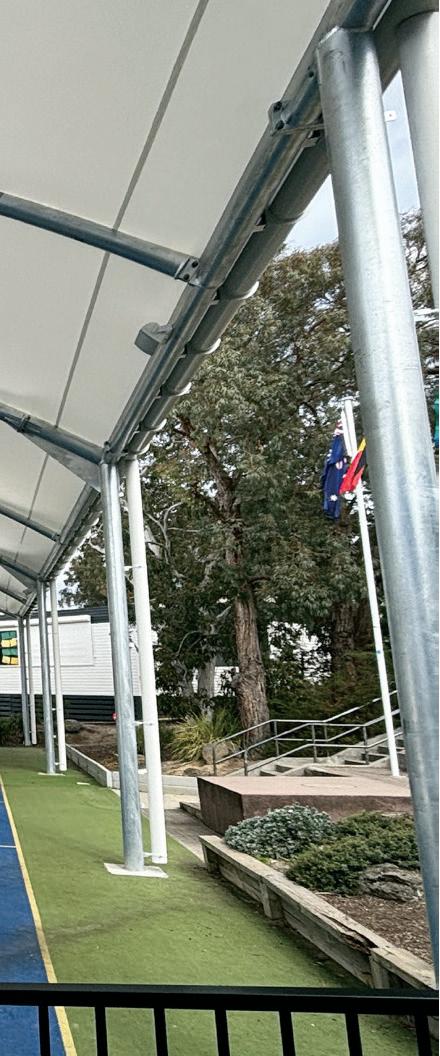
benefits of external learning for reinforcing student learning are well documented. Plus, everyone enjoys some time away from the classroom!
Our guest columnist for Principal Speaks this term is Helene Hiotis from Bentleigh Secondary College. Helene reflects on how she and her team have learnt to embrace the unpredictability that comes with being a teacher or school leader. Finding the lighter moments to balance out the heavy decisions, and making sure you show up each day, even when it’s hard, are important—because the kids are always watching.
I hope you find something of value in this edition of School News. All the best for the holiday period—I hope it doesn’t go by as quickly as the rest of the year has!
Best wishes, Gemma.



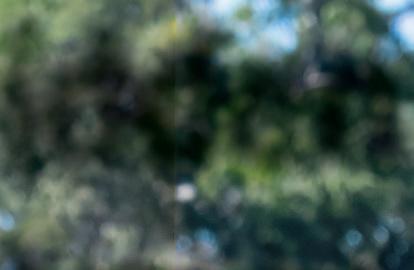




By Sarah Davison, Industry Reporter
For many families in rural and remote Australia, sending a child to boarding school isn’t a choice— it’s the only way to access a secondary education.
In some small towns, there is no high school at all, while for others, the only secondary schooling option might be an unmanageable distance away. This leaves no option but to send children away from home to continue their education.
The Isolated Children’s Parents’ Association of Australia (ICPA) has been advocating for these families for more than 50 years. Formed in 1971 after the closure of a hostel in Bourke forced families into expensive independent boarding, the association quickly grew into a national, apolitical parent body fighting for equity of access to education. Its early success came in 1973, when Education Minister Kim Beazley Sr. introduced the Assistance for Isolated Children Scheme, covering 55 percent of boarding costs.
Louise Martin, Federal President of ICPA, said the principle that drove the association’s foundation

Boarding schools are not a luxury for our families —they are a lifeline
remains unchanged. “From the beginning, our members recognised that rural and remote students were getting a second-rate deal,” she said.
“Boarding schools are not a luxury for our families—they are a lifeline. When local options disappear, boarding is the only way children can access the same opportunities their city peers take for granted. However, because they’re usually attached to large independent schools, the costs are incredibly high.”
Today, the organisation is once again at the forefront of advocacy, this time calling on the Federal Government to remove the Fringe Benefits Tax (FBT) on boarding school accommodation for essential supervisory staff. ICPA argues the tax unfairly inflates costs for families who already face some of the steepest barriers to education in the country.
Amber Driver, ICPA Federal Boarding Portfolio Leader, lives in a remote part of the Northern Territory and sees the challenges firsthand.
“For many rural and remote families right across Australia, the decision to send their children away from home to a boarding school is not a choice. They simply do not have access to a secondary school in their area. Some small towns have no high school at all, and for many remote families the closest option can be hundreds of kilometres away.
“I am currently employed in a remote area of the NT. My closest town, and secondary school, is 400 kilometres away. There are over 1200 students in the NT who have no access to a secondary school due to geographic location. At just 11 years old, my eldest son had to move interstate to Adelaide to begin secondary school.”
While some remote students may begin high school online, Ms Driver said that is no substitute for the opportunities boarding provides.
“Children from rural and remote areas who make the transition to boarding school suddenly have access to team sports, cultural diversity, pastoral care, science labs, libraries, design and tech equipment, and more— opportunities they could never have experienced around the kitchen table. Education is far more than academics, and many Australians only realised that during the COVID pandemic.”
Boarding means many children are able to immerse themselves in group learning, sit in a real classroom with their peers and interact with teachers in a faceto-face, hands-on environment. This is a very different experience to homeschooling or distance education.
“Remote students have the right to access a face-to-face learning environment for their secondary schooling despite the possibility of an online option,” Ms Driver said.
“I wonder how many metropolitan families would accept to complete high school online at their kitchen table—not attend extracurricular activities or play team sports—and be satisfied that this is considered a well-rounded education?”
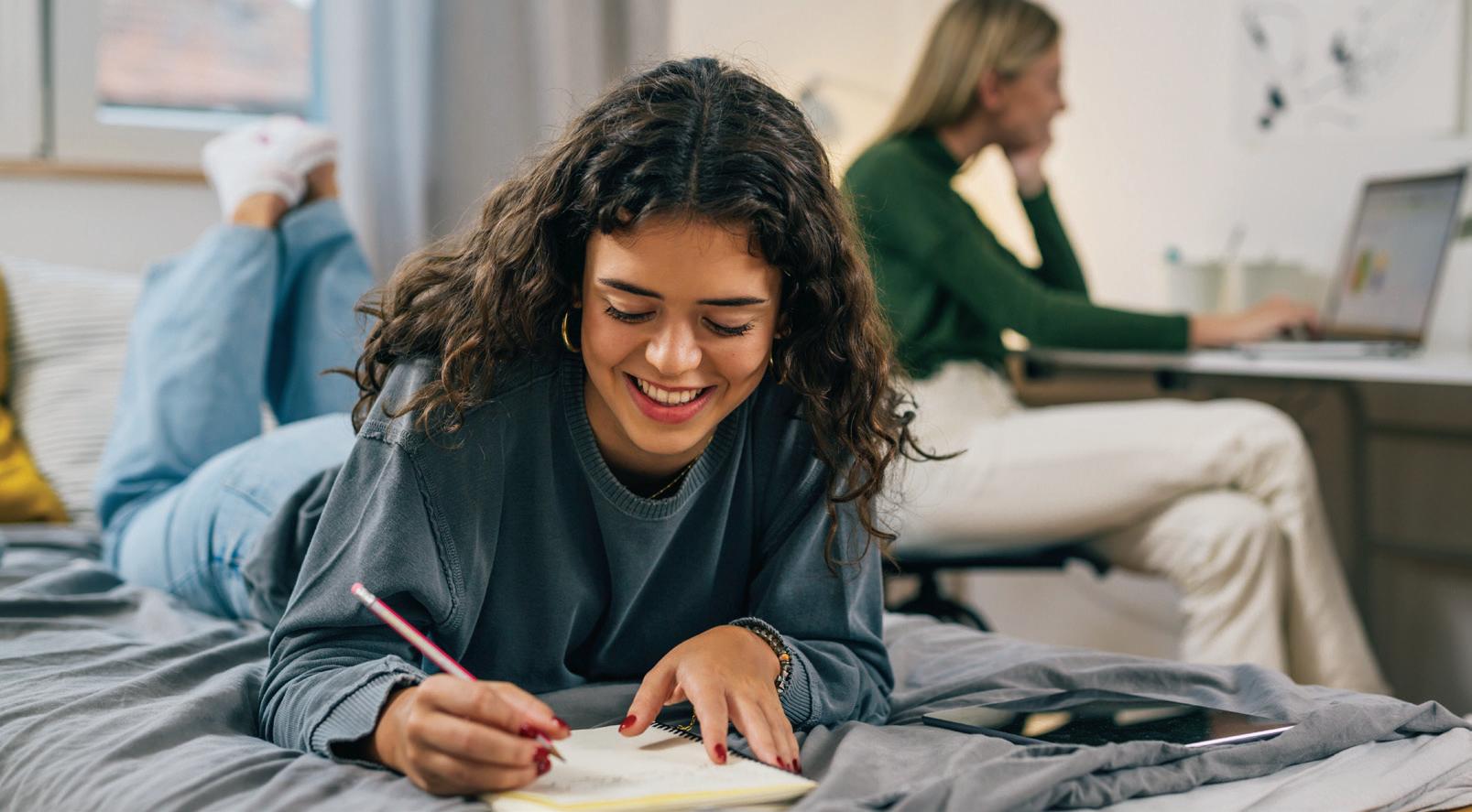
Some metropolitan families do, however, rely on boarding houses to support their students’ education. Some boarding schools offer flexible boarding, including weekly options, where students go home on weekends, or long night options—students stay after school to attend extra-curricular activities, complete homework and study, and enjoy a meal and shower before going home with their parents for the night. This model works particularly well for students with extensive after school activities, or for parents who work long hours, making school pick up difficult. These extra services that go beyond housing students from rural and remote areas make boarding schools vital in ensuring a broad range of students have access to the education opportunities they need.
Boarding schools rely on supervisory staff who live onsite to provide around-the-clock duty of care for students. But under current rules, their accommodation is taxed as a benefit—a cost that flows directly back to parents through higher fees.




The Australian Boarding Schools’ Association (ABSA) estimates that this tax adds around $2000 per student in some city boarding schools.
Richard Stokes, Chief Executive of ABSA, said the situation is untenable. “We’ve been lobbying the Federal Government for a long time to exempt those people who actually have to be there,” he explained. “We’re not talking about the groundsman or the principal—we’re talking about the essential boarding staff who look after the kids onsite 24/7.”
Ms Driver reinforced the point. “It is imperative that all Australians support the notion that our next generation has the care and support they need in order to access education. A Fringe Benefits Tax exemption for boarding schools that provide onsite accommodation for essential supervisory staff would reduce the financial burden on rural families.
“These supervisory staff are responsible for our children’s welfare after school hours, including overnight care. It is impossible to reconcile that the Federal Government says every child should have access to a high-quality education, yet still





deems onsite accommodation for essential staff in boarding schools a taxable ‘benefit’.”
ICPA also points out inconsistencies in how tax rules are applied. FBT is charged on boarding supervisors’ housing, yet not on accommodation in aged care facilities or military establishments. GST is levied on boarding school food, but exempt in aged care.
For the ICPA, the issue goes to the heart of fairness. Boarding schools are not optional— they are the only means by which many rural children can complete their schooling.
“From every corner of rural and remote Australia, we have sent our children away at a tender age to be educated for weeks, months and years on end—because we have to,” Ms Driver explained.
“Boarding school is not a luxury for our members’ children, it is the only access they have to a secondary school.
“Unfair taxes like these are adding to the high cost of educating students from rural and remote areas,” Ms Martin
said. “Removing the FBT on essential staff housing is a simple step that would make education more affordable and equitable for those who have no alternative.”
While tax reform would ease financial pressures, the human side of boarding remains just as vital. Ms Martin said the role of boarding staff in supporting rural children cannot be overstated.
“What bush kids need most is equity,” she explained. “Schools can support them by understanding the additional hurdles they face and ensuring there are strong wellbeing structures in place.”
She added that small acts of connection go a long way.
“Partnerships with families are key. Rural parents want to feel connected to their child’s education, even from hundreds of kilometres away. Staff who prioritise communication and genuine engagement help bridge that gap.”
Ms Driver echoed the sentiment. “These children are often only 11 or 12 when they leave home for the first time. Staff who show genuine care, whether that’s checking in after a tough day or encouraging involvement in sport or cultural activities, are providing more than supervision. They’re offering the stability and support that allows country kids to thrive.”
With 76 percent of boarders in Australia coming from rural and remote communities, the importance of staff support cannot be overstated. For many of these children, boarding is not simply about schooling—it is also about finding a safe, welcoming community far from home.














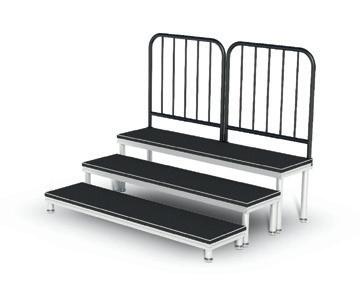


By Helene Hiotis , Principal, Bentleigh Secondary College, VIC
There are mornings when the rain falls in steady sheets, and instead of rushing from car to building under the safety of an umbrella, I choose to walk slowly, deliberately, through the downpour. There’s something honest about the rain. It doesn’t pretend. It doesn’t wait for convenience. It just is.
Life as a principal is much the same. Every day begins with intention yet rarely goes to plan.
A parent arrives early, anxious. A teacher needs five minutes that turn into twenty. A student’s silence in the hallway says more than their words ever could. And still, the bell rings, and the day begins. Students enter with their individual strengths and magic, and staff connect instinctively to create a safe, inclusive learning space. Like walking through the rain, every drop is diff erent yet together they form something whole and alive that is school culture.
In recent years, the connection to student has changed. Disciplinary actions are meaningless without relationships. Young teachers struggle to build a toolkit to deal with the challenges thrown at them by students who are not engaged or struggling with dysregulated behaviour. This unpredictability, and the ways in which we respond to it, shapes how we build our teacher practice. It pushes us to remain flexible, reflective, and solution-focused, turning each unexpected moment into an opportunity to refine our approach and deepen our

E ective teachers do not just tolerate unpredictability; they thrive in it
understanding of our students.
At Bentleigh Secondary College, we embrace this unpredictability. Our mission is clear: to build a culture of high expectations and educational excellence. We aim to develop independent, creative, resilient, and positive individuals equipped with the skills needed for a rapidly changing world.
Located in Melbourne’s southeast and spanning 6.5 hectares, our co-educational school serves students from Years 7 to 12.
Since our establishment in 1956 and our transformation into Bentleigh Secondary College in 1996, we have upheld a tradition of seeking truth and striving to
be the best we can be. This is captured in our mottos—Quaere Veritatem (“Seek the Truth”) and Optimum Esse Vos Esse (“Being the Best You Can Be”).
At the heart of everything we do is student learning, and central to that is leadership that nurtures learning for students, staff and the entire school community. As leaders of our practice, we need to be able to deal with this unpredictability and navigate the challenges that are often part of our daily routine. In teaching and leadership, each day in teaching presents unique situations, personalities, and decisions that require adaptability and emotional intelligence.
You do not always know what you are going to get and that is where the growth lies. Effective teachers do not just tolerate unpredictability; they thrive in it, learning from each new challenge and leading with heart and wisdom.
Staff often say to me, ‘How do you do your job?’ The truth is, I do not do it alone! We all do it together. As teachers and leaders, we each play a part to support each other and our students.
A key aspect of this is mentoring our middle leaders—many of whom have grown into senior roles at Bentleigh or beyond. This is not by chance, but through intentional coaching, open dialogue, and opportunities to lead with confidence.
With the support of our School Improvement Team, targeted professional learning was implemented to build teacher collective efficacy and capability in restorative practices. The school conducted a comprehensive review of student engagement, behaviour management, and academic outcomes, analysing data from the AtoSS (Attitudes to School Survey), PIVOT, and staff feedback on classroom challenges. This highlighted the need for a consistent, relationship-focused approach to student management and professional learning outcomes.
Recognising the importance of relationship-centred education, Bentleigh Secondary College partnered with Real Schools to embed restorative practices into teaching and learning. This
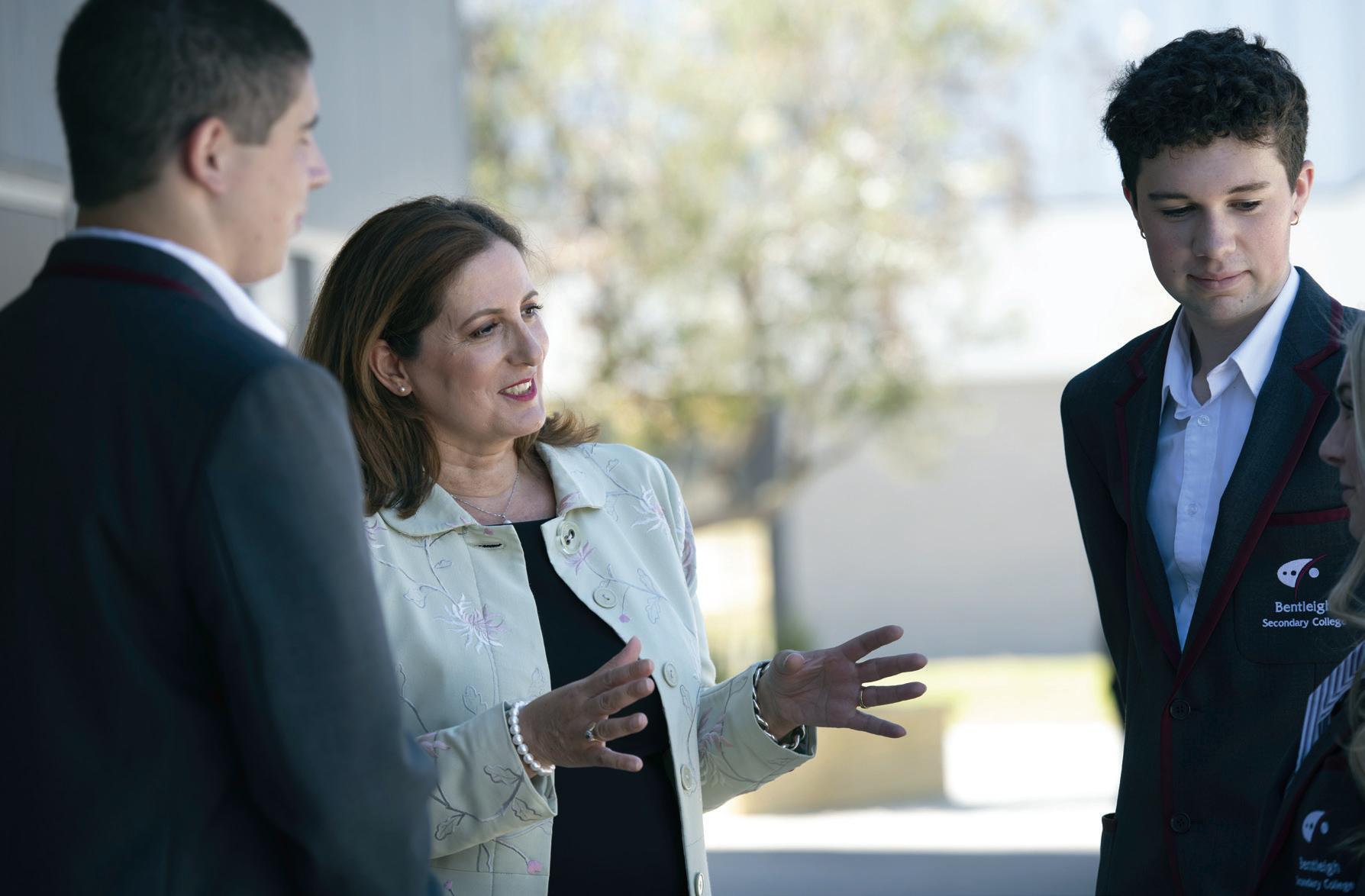
collaboration provided staff with expert-led training, coaching, and access to evidence-based strategies that promote positive student-teacher relationships. This approach integrates the philosophy of Real Schools, which emphasises relationship-centred education, with practical, effective strategies for managing diverse student needs. A standout feature of the program is its focus on building a positive school culture through restorative practices and relationship-building techniques.
The power of partnership lies in the relationship developed with our Expert Facilitator, Brenda Quayle, whose contributions prioritise emotional intelligence and foster respectful relationships between staff and students. This innovation not only enhances
student wellbeing but also promotes a collaborative learning environment; one in which a restorative school culture sits at the centre of everything we do. We work with each other to ensure that all stakeholders are involved in understanding their impact on the world around them and working towards ‘fixing up’ if things don’t go to plan.
Teachers are trained to move away from traditional disciplinary approaches, instead focusing on empathy, communication, and conflict resolution skills vital for long-term student success. Through ongoing workshops, faceto-face sessions, classroom visits, coaching, reflective practices, and online platforms, teachers receive the support and resources needed to embed these restorative and

relationship-centred approaches into their daily practice. The program ensures teachers understand these concepts and apply them effectively in their classrooms. And, of course, we don’t just lean into restorative practices when things don’t go to plan; we lean into a restorative culture as our way of knowing, doing and being as human beings.
Another key part of the school journey has been to train teachers to use real-time student data through Maestro Analytics to inform classroom strategies. This evidence-based method ensured interventions were targeted and effective. The use of data and feedback (via AtoSS/PIVOT) is also central to the program’s success. Teachers are encouraged to use real-time student data to adjust their strategies and ensure each student is supported in their personal and academic growth. This evidence-based approach ensures that learning remains relevant and impactful, addressing the unique needs of the student body.
Bentleigh Secondary College’s professional learning program demonstrates a commitment to excellence by nurturing teachers’ abilities to build positive relationships with students, driving improved educational outcomes. The school established dedicated Professional Learning Communities (PLCs) to drive continuous development. Staff from various faculties meet regularly to discuss best practices, trial new strategies, and reflect on their effectiveness.
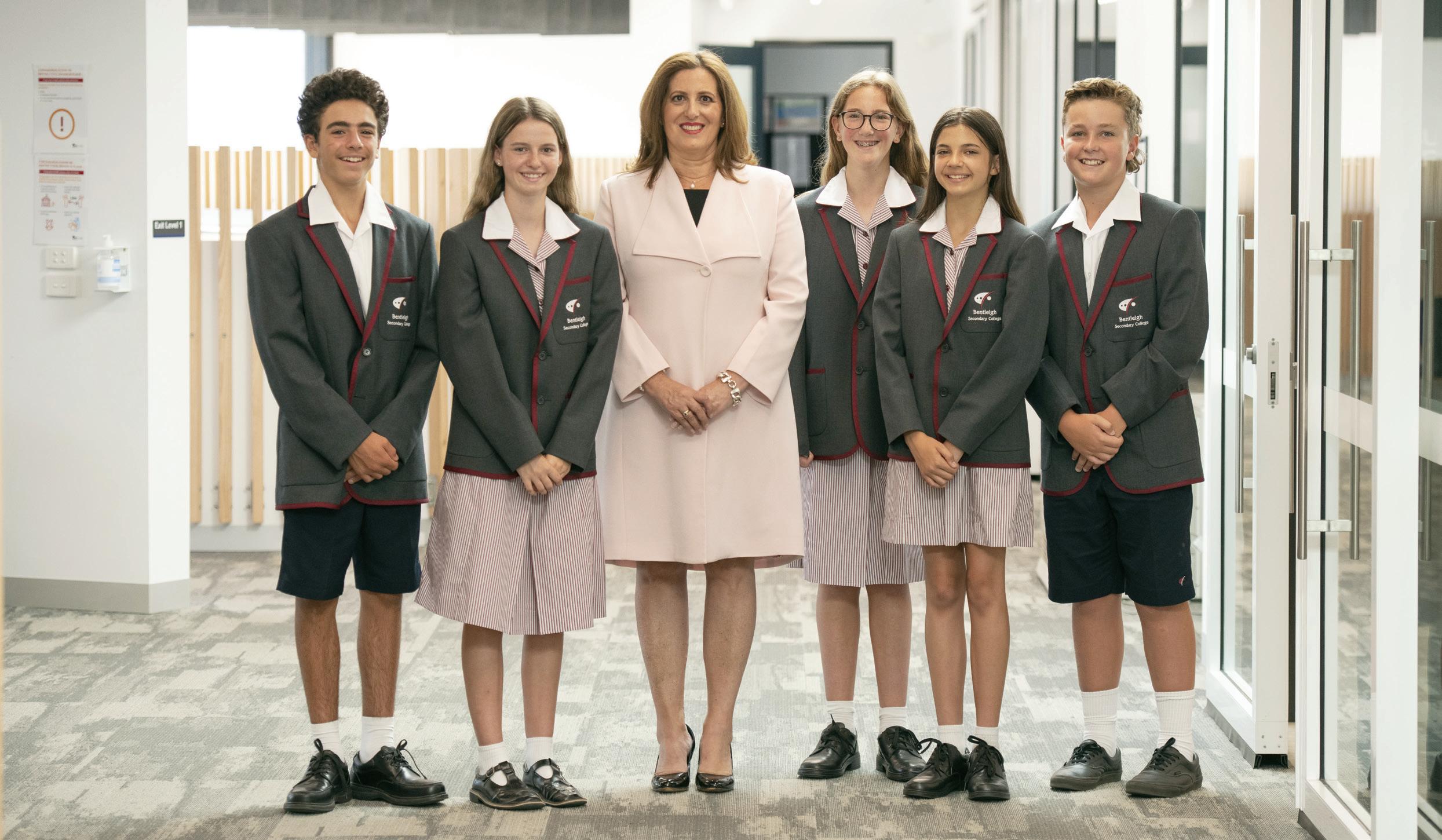
This professional learning was delivered through a blend of in-person workshops, classroom coaching, reflective practices, and videos, ensuring accessibility and ongoing development for staff.
Through these avenues, we have found that our strength lies in collaboration. In shared practice, reflective inquiry, and peer coaching, we create an environment where learning is mutual, and innovation is encouraged. Staff pursue advanced certifications, share strategies, and learn from one another in a supportive environment. As a result, Bentleigh Secondary College has reached a point in its story where we are seeing increased staff engagement and a steady rise in

academic outcomes, including our VCE study mean reaching 30.
Some days, as a principal, I feel the weight of every decision—a discipline policy, family conversations, the quiet fatigue in a teacher’s eyes.

Other days, it’s the joy of a breakthrough, a note of thanks, or a shared laugh in the staffroom. Regardless, I walk forward.
But being a principal is not about perfection. It’s about showing up, especially when it’s hard.
It’s about listening, guiding, standing firm when needed, and softening when it matters. It’s about walking through the rain, not around it—because the kids are watching, and they need to see that strength isn’t in staying dry, but in staying present.
When I walk in the rain, I find a strange kind of peace. The noise around me softens, the world shrinks to the rhythm of droplets on pavement, I am reminded of the importance of presence. Just like in the building behind me where hundreds of young lives are unfolding, I cannot control the storm, but I can choose how I walk through it. And so, I walk.

By Shannon Meyerkort, Industry Reporter
At Circular Head Christian School (CHCS), students from Kindergarten to Year 12 are guided with the school’s motto in mind: “All for the glory of God.” For Principal Ara Popowski, leading the school has been both a professional and personal journey spanning almost eight years.
Located in the far north-west of Tasmania, the area is rich with both wilderness and agriculture, and it makes sense for schools such as CHCS to focus on Vocational and Educational Training (VET) to prepare students for a world reflecting the local rural and industry-based economy.
“My journey has been quite different from the norm,” Ara reflects. “As a young mother of

six children, I had to weigh up my responsibilities as a share dairy farmer alongside my husband, and my desire to be a teacher.”
Beginning as a parent helper in the mid-1990s, she became a teacher aide in 2002 and later completed a Bachelor of Education by distance through UTAS. She progressed through roles including Head of Junior School and Assistant Principal, before assuming the principalship.
Alongside her career, she and her husband—who is a builder by trade—have run their own business, instilling
a long-standing respect for vocational pathways in their community. “We have always promoted trades as it is such a rewarding career,” Ara reflects.
It is this respect that underpins CHCS’s innovative approach to VET. The school has created a model in which every Year 10 begins a certificate course, making VET a starting point for every student, rather than an optional pathway.
It had become common for students in the region—and the state in general—to leave school at the end of Year 10. “A key driver was the Tasmanian Education Act changes that would require all students to remain in school until they are 18, complete a Certificate III or obtain their Tasmanian Certificate of Education,” Ara explains.
“Our program was intended to rewrite the narrative where Year 10 becomes the start of your final years, not the final year.” Working closely with the then Head of College, Ara and her team designed a model allowing students to
gain skills, knowledge, and qualifications they could see and use immediately.
“We had always been a proactive school in relation to VET programs and maintained a positive relationship with our local high school, working together when we could to provide all students in the community with the best opportunities to learn skills and be prepared for their chosen pathways. We looked at what schools around Tasmania were doing in the VET space and came up with a model that we thought would work for us.”
The program, now known as ACCESS—Achieving Career Competency while Engaging in School Studies—allocates one day a week for students to engage in real workplace experiences while obtaining their qualifications. This structure not only gives students authentic learning opportunities but also allows the school to maintain strong relationships with local businesses and industry partners.

“There were definitely challenges from all stakeholders,” Ara acknowledges. “Parents were concerned that their children would not get to do Year 10 ‘Elective’ subjects. It took a few years to have a new norm where the students study four years of ‘Elective’ subjects throughout Middle School (Years 6 to 9) before commencing College. Now it is not even an issue for students or parents.
“It took a little bit of work for all staff to see the value in VET studies and to encourage students to keep their options open, whether they were aiming for university or the VET pathways,” Ara adds. But the key was ensuring that the entire school community valued the VET programs as equal to the TASC programs, and that all student pathways were seen as a priority.
Authenticity is central to CHCS’s approach. Partnerships with ventures such as the Roaring Forties Oyster Farm and Edutec ICT allow students to train in real-world environments, completing Certificate III in Aquaculture or Certificate II in ICT.
“At the heart of both of these projects was a genuine desire to give the students the most authentic learning experiences

possible. They were genuine businesses set up and designed to service the community,” Ara says. Even though the oyster lease has since been sold, the Edutec ICT business continues to support both students and the school. Student success stories illustrate the impact of the program. “Our 2022 Dux of school studied Cert II in Sport and Rec during Year 10, mostly at home in isolation due to COVID. She completed this course in six months and was then allowed to take on Cert III, which she completed by the end of Year 10. She kept her options
open and ended up choosing a university pathway studying a Bachelor of Sport and Exercise Science, and a Bachelor of Nutrition.” Another student pursuing a trade completed Cert II in Electro Technology in Year 11 and was offered a linesman apprenticeship with TasNetworks after Year 12.
The benefits of the ACCESS program extend beyond the college students themselves. CHCS’s Trade Training Centre allows junior and middle school staff to access facilities and expertise, creating opportunities such as animal care events. Ara recalls a
calf parade organised by the Animal Ag class, where the entire junior school engaged in grooming and leading the calves—a practical extension of learning across the campus.
Looking to the future, Ara sees VET programs growing in importance. “It is an essential part of school life and I encourage all schools to get on board; start looking at what can be offered. It is wise to visit other schools and see what can be achieved in small towns on limited budgets. Look at staff skills and qualifications and go from there.”

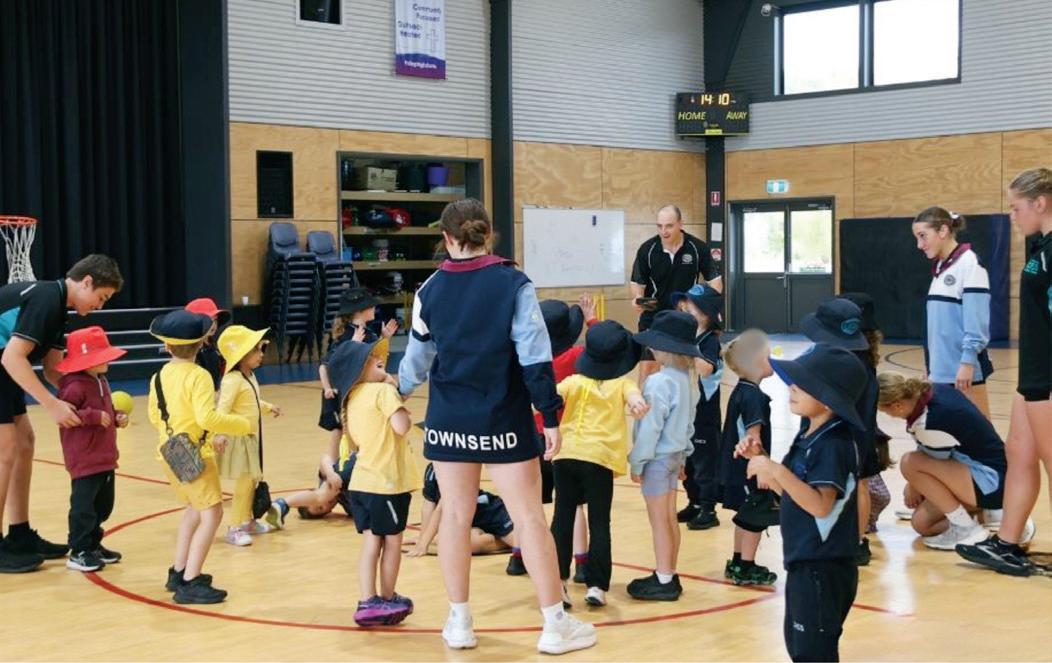
CHCS continues to adapt its off erings based on staff expertise, student interest, and available resources. Current initiatives include the second year of an Animal Ag Class and a reshaped Hospitality Certificate II program, now called Hospitality Plus, which equips students with business units alongside RSA and barista certificates.
The success of the ACCESS program, Ara emphasises, is a testament to the school’s committed team. “There are many layers of support from school management to the
Head of College, the ACCESS coordinator, and support staff. Our dedicated teachers are committed to training to obtain the required qualifications, maintain their industry currency, and deliver the course through our one-day program.”
By embedding VET into the foundation of senior schooling, Circular Head Christian School is not only keeping students engaged but ensuring they leave school with practical skills, real qualifications, and the confidence to pursue meaningful careers.
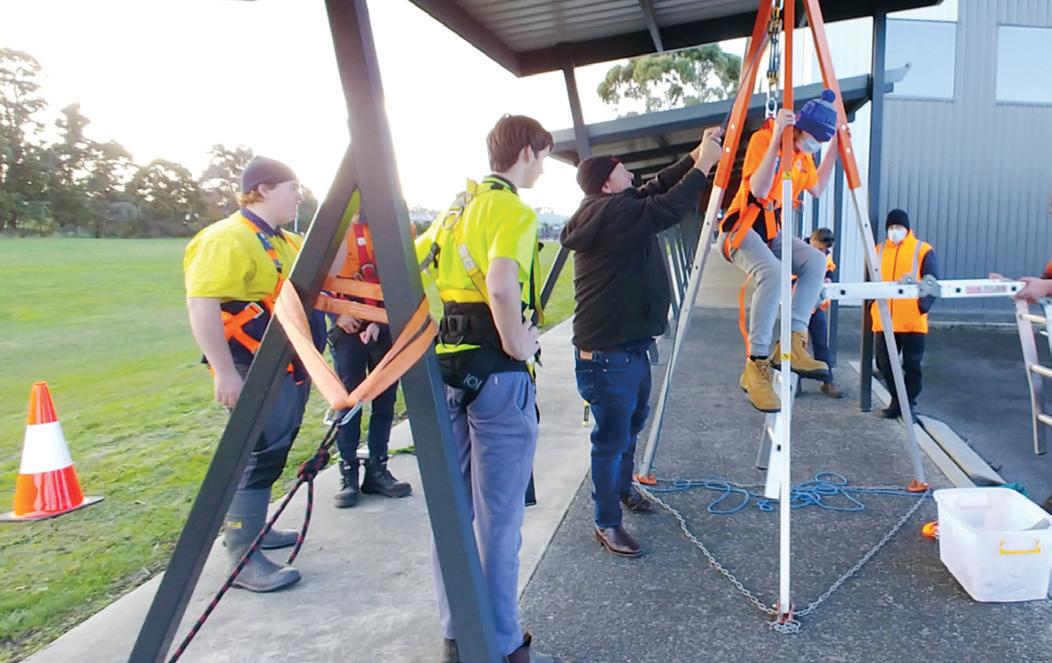



1 - 21 March 2026 DREAM FEARLESS









Packed with interactive content , engaging activities, and learning tools, the AFC Women’s Asian Cup 2026™ SCHOOL ACTIVITY BOOK helps you spark curiosity, build teamwork , and celebrate the power of women’s football with your students. It ’s a great way to learn and get everyone excited about the biggest women’s tournament in Asia!

Football Australia and State Member Federations are the endorsed providers delivering Australia’s largest school-based participation program –SPORTING SCHOOLS. This program aims to get children active, with a focus on movement skills, teamwork , coordination and fun.
Funding for Term 1 , 2026 opens at 8am (AEDT) on Monday 27 October 2025



the FREE resource! Find out more!


By Sarah Davison, Industry Reporter
With literacy standards under increasing pressure, Australian schools are seeking new ways to help every student build the skills needed to thrive in a fast-changing, information-rich world.
Despite record levels of formal education, research shows that literacy challenges persist across all age groups and demographics. Around 44 percent of Australian adults have low literacy, and one in three Australian children are
Images courtesy of MultiLit
not reading well. In the average classroom of 24 students, eight struggle with reading, and those from disadvantaged, regional, or Indigenous backgrounds face even greater barriers.
This national literacy gap has significant social and economic implications. The Australian Industry Group reports that 99 percent of businesses are affected by low literacy levels, while the Grattan Institute estimates that poor reading performance among today’s students could cost the nation $40 billion over their lifetimes.
In response, educators are shifting towards structured, evidence-based approaches

that focus on explicit teaching, early intervention, and sustained engagement. Strengthening foundational skills, providing targeted support, and equipping teachers with high-quality training and resources are key to ensuring every student can become a confident, capable reader and writer.
To learn more, School News spoke with the experts at MultiLit and Little Learners Love Literacy.
What should schools be looking for when choosing a literacy program for learners in today’s classrooms?
Olivia Durnan, Professional Learning Manager, Little Learners Love Literacy:
Schools should look for a structured, evidence-based program that teaches reading and spelling together following a clear scope and sequence that progresses from simple to complex. It should teach foundational skills and knowledge as defined by current research and evidence, including phonemic awareness, phonics, morphology, fluency, vocabulary, and comprehension.
The program should ensure that students learn and practise both decoding (reading) and encoding (spelling) together,
alongside handwriting. It should use an explicit teaching model that follows an I Do, We Do, You Do approach, giving students multiple opportunities to master and retain learning.
A strong literacy program provides a wide range of structured practice opportunities, including quality decodable books, so that every student can participate and progress. It should also embed explicit teaching routines that are consistent, lively, and engaging to manage cognitive load and maximise learning retention.
Finally, it must include wraparound support to train, coach, and troubleshoot. Changing teaching approaches and programs requires strong leadership, and leadership teams need ongoing support to make lasting and impactful change on student outcomes.
Dr Alison Madelaine, Clinical Director, MultiLit Literacy Centres, and Senior Research Fellow, MultiLit Research Unit:
When selecting a literacy program, schools should ensure it aligns with the Science of Reading, covering phonemic awareness, phonics, fluency, vocabulary and comprehension, while also addressing spelling, writing and oral language. The program should be evidence-based, demonstrating measurable improvements in literacy skills, and use explicit, systematic instruction that keeps students actively engaged with frequent feedback.
Regular assessment and progress monitoring are essential, particularly for students needing extra support. Effective programs also cater to diverse learning needs, using a Response to Intervention model to provide increasing levels of support (Tiers 1–3). P16
Learning to read is one of the most critical educational tasks children undertake in the first years of schooling.
Early success with reading depends heavily on mastering foundational skills, including phonics.
Research and practice have shown that whole-class, explicit instruction encompassing the Five Big Ideas of reading in the first three years of primary school provides the most reliable pathway to those essential skills. It also reduces the number of children who need costly intervention.
InitiaLit, developed by Australia’s leading provider of eff ective literacy instruction, MultiLit, is an evidence-based whole-class literacy program designed for use from Foundation through to Year 2.
It provides Tier 1 instruction that explicitly and systematically teaches phonics, as well as vocabulary, oral language, listening comprehension, grammar, reading fluency and spelling.
It includes a clearly defined scope and sequence for phonics as well as comprehensive lesson plans that enable frequent practice and cumulative review.

The program is supported by a rich literature component that builds comprehension, oral language and vocabulary while fostering students’ love of reading.
MultiLit Director Dr Robyn Wheldall says that whole-class explicit instruction, within a Response to Intervention framework that supports targeted diff erentiation, ensures that all children receive high-quality, consistent instruction.
“By equipping all students with a solid grasp of key foundational skills, InitiaLit aims to reduce the number of children who require additional support via reading intervention,” Dr Wheldall said.
“Teachers can pace and scaff old learning appropriately, while early screening and formative assessment help to identify those needing extra support.
“The whole-class model is more efficient and cost-eff ective than relying on small group or one-on-one intervention lessons for children who have fallen behind and gets students off to the best possible start with their literacy.”



A survey of more than 600 educators, conducted by MultiLit in 2024, revealed that schools were struggling with the high proportion of students who needed literacy intervention. More than 60 per cent of respondents reported that their schools have up to 40 per cent of students requiring intervention.
Schools implementing InitiaLit consistently report fewer students needing intensive support in higher grades as low-progress readers are caught early, not after they fall behind.
MultiLit has been providing eff ective literacy programs for 30 years. The organisation currently works with more than 6500 Australian schools and trains more than 9000 teachers each year.





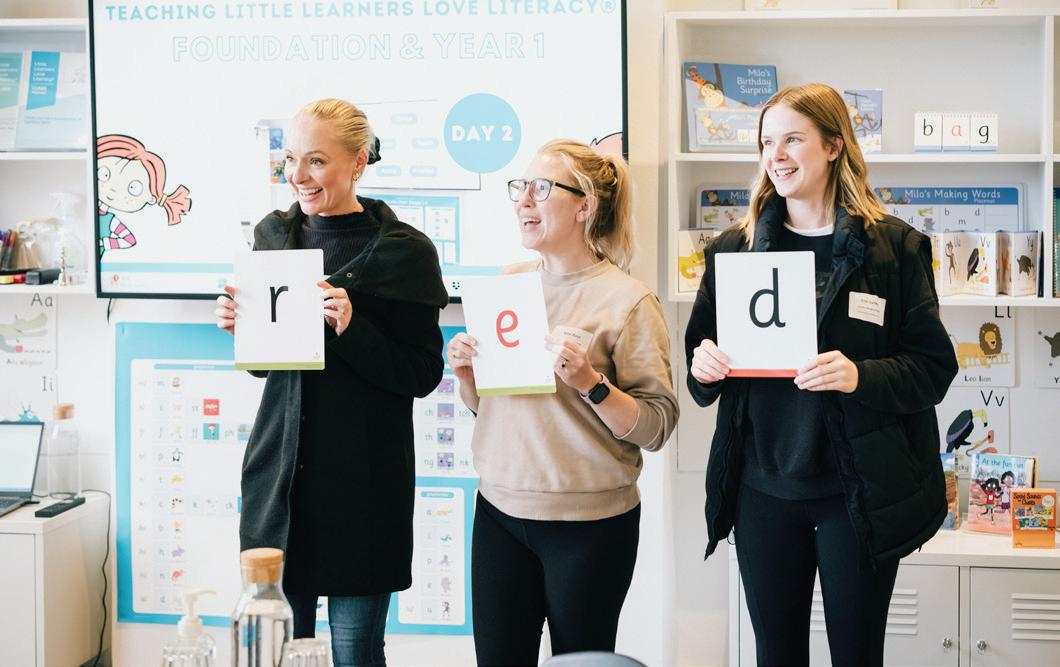
Teachers should be well supported, with resources and training to teach literacy eff ectively, especially if their pre-service education was limited in this area.
To address early gaps in oral language and phonological skills, teachers should assess students upon school entry and implement early interventions. Techniques like dialogic storybook reading, vocabulary teaching, and sound-based games (for example, clapping syllables, “I Spy,” and blending/segmenting activities) help develop foundational literacy skills essential for reading success.
Olivia Durnan: Classroom practice resources are vital tools that support mastery of explicit teaching. Decodable texts allow children to apply the phonics knowledge they’ve been explicitly taught, reducing guesswork and supporting fluency development. They provide repeated practise and help build confidence. Most importantly, they give literacy instruction purpose and meaning, helping students experience success and achievement.
Games and quizzes can help make learning engaging, and
reinforce oral language and vocabulary development.
For students who are falling behind, what are some of the most eff ective ways schools can provide targeted support while also keeping those learners engaged and motivated?
Dr Alison Madelaine: A Response to Intervention Framework is a good way to ensure that eff ective, targeted support is provided to those students who are falling behind in literacy. On average, about 20 percent of students will need more intensive intervention than what is provided to the whole class (Tier 1 instruction). This is known as Tier 2 intervention and typically involves small group intervention several times a week in addition to whole class instruction. The small group context allows students to respond more frequently and have more practise in the skills they need to improve their literacy.
A small number of students (about fi ve percent) will need more intensive intervention again and should be provided with Tier 3 intervention. This is typically provided by a more qualified and experienced teacher, for example, a learning support teacher or a special educator, often in a 1:1 context. As students improve, they can move back up through the tiers.




In terms of professional learning, what forms of support are most eff ective in helping teachers deliver structured literacy approaches with confidence?
Olivia Durnan: Professional learning is an essential component of any structured literacy program. Quality professional learning should help teachers understand the theory underpinning structured literacy. It should also provide opportunities to watch and practise key teaching routines, ensuring fidelity and consistency in delivery.
Eff ective professional learning builds teacher confidence to implement explicit instruction across whole-class, small-group, and intervention sett ings. It supports staff in using the program’s resources and routines with fidelity, avoiding mutations that could compromise student learning, and helps streamline their workload.
Dr Alison Madelaine: When implementing a new literacy program, teachers should be supported through comprehensive training and ongoing guidance. This includes background knowledge on the Science of Reading and Writing, strong initial training, and follow-up sessions to reinforce learning and address challenges once teaching begins.
As part of this intervention, students should receive regular reading practise in which they read to another person, like a teacher or parent, with that person providing specific feedback and praise.
As part of this practise, students should read challenging texts that are ageappropriate and interesting, and this can help with engagement and motivation.
Scripted programs can ease cognitive load by helping teachers focus on lesson delivery rather than planning phrasing or sequencing.
Additional support may include lesson observation and feedback from experienced educators, opportunities to engage in professional learning communities, and access to evidence-based reading resources designed for practical use within busy teaching schedules.


In today’s ever-evolving educational landscape, learning is no longer confined to the classroom.
As schools look to the year ahead, Professional Learning and Development (PLD) continues to evolve beyond lesson plans and pedagogy. It’s now about nurturing the whole school community empowering teachers, supporting student well-being, and creating environments that help everyone thrive.
True learning happens not just in classrooms, but in the everyday rhythms of school life – in the staffroom, the playground, and even in the washroom. These spaces play a quiet yet important role in shaping a positive, caring culture.
At Sorbent Paper Co., we believe that supporting educators and students goes hand in hand with providing clean, comfortable and sustainable spaces. Our Sorbent Professional and Livi ranges –
including toilet tissues, hand towels, facial tissues, soaps and sanitisers are thoughtfully designed to promote hygiene, comfort and peace of mind throughout the school day.
All our paper products are PEFC certified, meaning they come from sustainably managed forests, helping schools align with their environmental goals while caring for their people. And with our new Sorbent Professional Performance Plus TAD hand towels, staff and students alike can experience exceptional absorbency, softness and strength – a small detail that makes a big difference in high-use environments.
As schools invest in the growth and well-being of their staff and students, creating spaces that reflect care, respect and sustainability becomes part of the learning journey.
Because when we care for the people who care for others, we build stronger communities – one thoughtful choice at a time.

By Sarah Davison, Industry Reporter
In busy school corridors, classrooms, and outdoor areas, clutter from student bags is more than just an eyesore—it can pose serious safety risks.
Tripping hazards, congestion, and untidy spaces are everyday concerns for many schools, while blocked exits in an emergency highlight the critical need for safer storage. The answer lies in smarter systems that balance safety, function, and flexibility.
“Bag storage is often overlooked by designers and procurement teams, yet it plays a critical role in how students and staff move and work each day,” Linc Furniture Managing Director Len Hyde said.
“In recent years, needs have shifted from heavy, book-laden bags to lighter backpacks supported by digital learning, and storage systems must continue to evolve.”
Modern bag racks are no longer unsightly steel frames placed against a wall. Schools are embracing designs that integrate neatly into their spaces, provide clear organisation, and support student routines.
Racks that are tiered, opensided, or designed with airflow in mind help reduce clutter without creating congestion.
“Bag racks can become obstructions, blocking corridors, stair landings or spaces that need to remain clear. The best storage solutions provide order rather than clutter. They solve problems, adapt to changing needs, and contribute to the overall flow of a school environment.
“Different groups in schools approach the issue from different angles. Principals want safe, visible improvements that reflect well on their school,” Mr Hyde said.
“Business Managers focus on compliance, cost, and durability. Teachers need storage that simply works in practice, reducing clutter and creating calm classrooms. Maintenance staff look for systems that are robust, easy to install, and simple to maintain.”


Durability is another key consideration when choosing storage. Powder-coated steel remains a staple, but schools are also opting for materials that are both resilient and lowmaintenance. Anti-corrosion finishes extend the lifespan of outdoor racks, while scratchresistant coatings minimise wear in high-use areas.
“Colour choices are also influencing design. Neutral bases such as charcoal or black are most common, with accent colours—blues most often, followed by greens and reds—used to support house identity or wayfinding. This balance creates calm, consistent spaces while still allowing vibrancy,” Mr Hyde said.
For schools that lack the space for large storage set ups, wall-mounted or free-standing hooks are a flexible, spacesaving option. They provide easy access for students, work well in high-traffic corridors, and can be installed at varying heights to suit different age groups.
“Hooks jammed too close together may appear neat on a plan but are impractical in reality,” Mr Hyde said. “Proper spacing ensures usability and avoids the cluttered look that undermines their purpose.”
With space always a consideration, portable storage systems are proving particularly effective.
“Schools facing pressure on space are turning to mobile storage systems. These allow bag areas to be reconfigured, moved out of high-traffic zones, or set up in temporary spaces such as OSHC facilities or demountable classrooms. Mobility gives schools flexibility when dedicated storage areas are limited,” Mr Hyde explained. Sustainability is also now at the forefront of the conversation. “Schools are asking how products can be reused, recycled, or upgraded at the end of their life,” Mr Hyde said.
“This reflects the broader shift in education toward responsible, long-term procurement choices that weigh environmental impact alongside immediate functionality. The conversation is shaping the future of school storage, moving from single-use solutions toward systems designed with circularity in mind.”
Ultimately, bag storage is about more than preventing tripping hazards. The right system can reduce stress and clutter in classrooms, improve student movement, and enhance the overall school environment.
Storage, when thoughtfully designed, becomes part of the infrastructure that helps schools’ function more efficiently, balancing safety, durability, and flexibility while supporting a better learning environment for students and teachers.




storage solutions for modern learning spaces. A system that grows with you.




ENGINEERED FOR OUR TRUSTED CLASSMATE HOOKS.







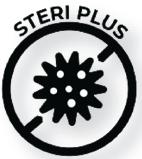









Keep classrooms, hallways, and shared spaces tidy and safe with the Stowmate storage system. From portable mobile units to sleek wall and school’s needs. Fully compatible with our proven Safehook hooks, it’s a


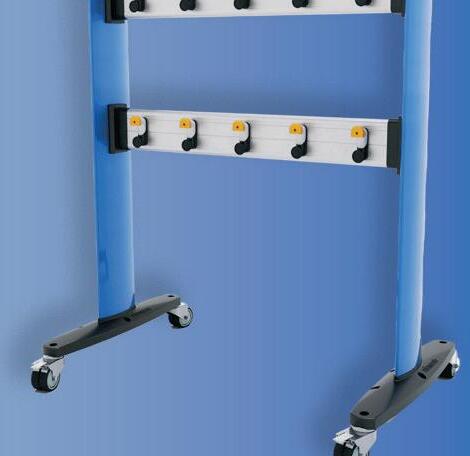














By Naomii Seah, Industry Reporter
Any school knows that their staff are their biggest resource.
This means supporting staff wellbeing and productivity is the key to a thriving school community. When teachers feel well rested and valued, they are motivated and better able to enact quality teaching and learning.
Fostering a sense of connection and community among staff is also key to creating a collaborative environment which ultimately benefits the whole school. A strong team culture means colleagues support one another, and a unified teaching team means it is easier to achieve a cohesive and consistent approach to teaching and learning, potentially leading to improved outcomes for students.
For these reasons, staffrooms are vital spaces for a school. They can fulfil an important role as a breakroom where teachers can rest and recharge away from students, but they are also places where colleagues can connect with one another and have a dedicated space to collaborate. At minimum, staffrooms should include a well-equipped kitchen

and a break area. A sink, fridge and microwave are basics, but additional appliances like a sandwich press, a stove, an air fryer, or a coffee machine could help to boost morale.
Given schools’ tight budgets, even small, thoughtful additions could go a long way to tell staff they are valued and appreciated. More than a simple gesture, providing things such as free fruit, coffee, tea and biscuits can be an instrumental way to uplift staff wellbeing. An initiative like free fruit promotes healthy eating, improving physical wellbeing, whereas free coffee and tea promote social wellbeing as colleagues sit down together for a cuppa.
As a nexus for educators, staffrooms can address wellbeing in many ways. The inclusion of shower or change facilities in staff bathrooms could encourage more people to run or bike to work, for example. Even seemingly
simple additions like greenery or art can make a difference to wellbeing, as being outdoors has been shown to positively impact wellbeing, and so has engaging in creative activities.
Wellbeing campaigns can be run from staffrooms, where there is potential to include material supports. For example, a mindfulness program could be accompanied by the installation of a quiet area or a guided meditation recording.
Schools looking to upgrade their campus could consider refurbishing or redesigning staffrooms with educator wellbeing in mind, whether that’s the inclusion of an easily accessible outdoor green space, a quiet break out area, or equipment like yoga or gym balls to encourage movement.
Staffrooms are not only break areas, but they are also a vital resource for school employees.
Information should be readily available about support services, codes of conduct, employee assistance, complaints procedures and more. This means a noticeboard and a pamphlet information area are essential for staffrooms.
Staffrooms are also an important communal space. As teachers usually spend their days teaching separately in individual classes, the staffroom represents an otherwise rare opportunity to collaborate with colleagues. Including communication tools like whiteboards or smartboards, projectors, interactive panels or TV screens is essential for promoting a culture of collaboration.
Having these available communal resources for group discussion and planning can facilitate teamwork between educators, which has wider implications for school culture and students. With a strong team culture, learning can be made more consistent across subjects and students can be guided to make interdisciplinary links as teachers discuss and plan content together.
School leaders should consider the above functions of the staffroom when selecting its furnishings.

The furniture’s attractiveness, functionality and positioning can all influence how and when staff use the room, and whether being in the staffroom—and by extension, being at work—is a pleasant experience or not.
Annabel Parletta, Design Manager at Resource Furniture, noted:
“Comfort and functionality are essential when selecting staffroom furniture because these spaces serve as a retreat for staff to recharge and collaborate. Comfortable seating and ergonomic design help staff relax, improving overall wellbeing and job satisfaction. Functionality ensures the
furniture is practical, durable, and supports multiple needs, such as providing spaces for eating, working, and informal meetings.”
Furniture can also influence the development of a team culture in the workplace. Items that allow for flexible configurations to support work groups of varying sizes and focus can encourage collaborative workflows. Ms Parletta said schools should consider modular options.
“Modular desks and workstations can be easily rearranged to support group projects or oneon-one conversations. Mobile furniture enables staff to create

breakout spaces that foster collaboration and individual work. Comfortable, attractive furniture such as soft seating enhances morale and creates a positive working environment where staff feel motivated to collaborate and contribute.”
Finally, staffrooms also require smart storage solutions.
“Tote trolleys are an excellent way to keep staff members’ personal items neatly stored and easily accessible, ensuring everything is in one designated place,” said Ms Parletta.
“Open lockers are also a practical option, providing additional space
for both classroom materials and personal belongings. Together, these solutions help maintain a tidy, efficient staffroom environment while making it easier for staff to access what they need throughout the day.”
A well-designed, thoughtful, and attractively presented staffroom could contribute to the overall wellbeing and success of the school community. This means an investment into staffrooms is an investment into the school’s long-term goals. Whether it’s improved teaching and learning or stronger camaraderie, consider how these aims can be furthered through staffroom facilities.

The SERP Collection is designed for lasting comfort and adaptable style, modular, durable, and the perfect fit for any school breakout space.
design@resourcefurniture.com.au www.resourcefurniture.com.au

By Gemma Easton , Editor
The challenges teachers face in the classroom each day are wellreported—the struggle for student attention, the challenge of genuine connection, and the need to create novel, engaging experiences. While screen-based learning and a reliance on technology have become the norm, the solution to some of these daily struggles may lie in putting things into students’ hands.
Ian Holden, Chair of We Support Hands On Learning (WESHOL) and his team, are helping teachers reconnect with practical, handson resources in the classroom. With a forty-year career as an educator and principal, Ian has seen first-hand the benefits of hands-on learning.
“We know as soon as we actually put things into children’s hands, their enjoyment and engagement goes up,” he said.
“When we move to hands-on learning, collaboration improves dramatically. Looking around schools, quite often I see a teacher teaching from their laptop through PowerPoint slides. Then, we’ve got a classroom full of students often on their own screens,

responding to the teacher’s PowerPoint slides. Collaborating, and learning through others, with others, can’t happen.”
Specifically, hands-on learning involves students physically engaging with concepts through materials, resources or manipulatives, rather than just reading or listening. Simple tools like counting blocks, magnetic letters and numbers, jugs to demonstrate capacity and volume, or a physical book for children to engage with, through to more complex science equipment and robotics are all examples of hands-on learning tools.
A hub for educators, WESHOL provides ideas for hands-on learning; connects educators with companies who provide physical resources for schools; and promotes engagement with other teachers and professional bodies to share ideas on implementing hands-on learning in the classroom. WESHOL advocates

for physical, tactile experiences in the classroom, to promote engagement and improve learning quality. WESHOL’s partner’s include leading organisations like LEGO, Hart Sport, and Clever Patch.
Ian said hands-on learning doesn’t need to replace explicit teaching, and that not every lesson has to have a hands-on component.
“Teachers might think about ways to implement hands-on activities once or twice a week as a starting point. Materials can be basic, and should be focussed on specific learning intentions and learning objectives.”
Similarly, technology and screens don’t need to be removed from the classroom altogether. “We want to help teachers think about ways to blend technology with hands-on resources. Explicit instruction will always be important, but hands-on tools and experiences can improve student engagement, enjoyment and knowledge retention.”
The COVID years, Ian said, saw schools and teachers have to pivot quickly. “Screen based learning was the solution, and it was important at the time to provide a stopgap—we managed to maintain a level of education for students, so they didn’t fall too far behind.
“I think we all knew then it was okay, but not brilliant, and not ideal long-term. The model of screenbased teaching and learning has stuck as a default, and nobody seems to have challenged it.”
Hands-on learning can help classrooms return to their pre-pandemic dynamism, and support the range of different learning styles and needs we see in classrooms today. “We need to make sure we don’t fall into a one-size-fits-all approach. For students who find it hard to focus on one thing for a long period of time, hands-on, practical, physical resources really support them with their learning.”
Looking ahead, WESHOL will launch a bursary next year in collaboration with their partner organisations. Practitioners will be invited to apply, with successful applicants provided with physical resources which they can use to demonstrate the benefits of hands-on learning.
Ian said: “What I know is that teachers are incredibly passionate. They are drawn to the profession. It’s a vocation and every teacher that I’ve met in my 40-year career has wanted to do the best possible job for their students.”
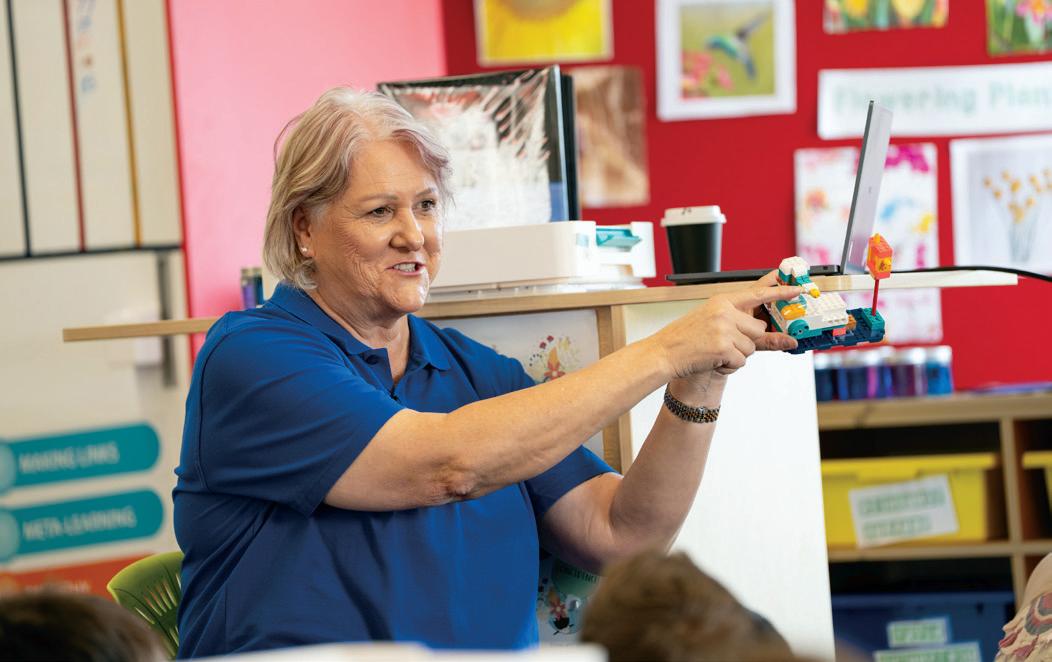

Educators tell us that when students are involved in tactile, physical experiences, they are more engaged, focused and connected to the learning. This new initiative is all about putting the spotlight back on hands-on learning, and the power of connection and engagement it unlocks.
We Support Hands-On Learning is a passionate and committed group of educational organisations and individuals who are keen to re-ignite the power of connection that comes through hands-on learning. Our mission is to advocate for physical, tactile experiences in the classroom to drive engagement and enhance quality learning.
92% of teachers say student engagement is a key driver of success.
Educators also point to attendance and student learning satisfaction as important for academic success.
Source: State of Teaching & Learning in K-12 Education
Join us in championing hands-on learning. Become your school’s advocate and we’ll support you with the resources and inspiration to help bring it to life. Visit supporthandsonlearning.com to sign up.





By Naomii Seah, Industry Reporter
Educators’ professional learning and development (PLD) is globally recognised as a necessary part of an effective education system.
As pedagogy changes, new research emerges, and policy priorities change, teachers must update and improve on their practice to deliver the best outcomes for young people.
PLD is also essential to help teachers and school leaders meet their career ambitions. With a looming teacher shortage, actively working to retain teachers is critical. Learning and growth is just as important for personal development and job satisfaction as it is for meeting regulatory requirements. After all, the most effective educators feel happy, fulfilled and valued.
All Australian teachers are required to participate in ongoing PLD to meet the industry’s professional standards and requirements for registration renewal. Exact requirements vary by state, but all teachers must undertake PLD related to
at least one of seven Australian Professional Teaching Standards:
1. Knowing students and how they learn.
2. Knowing the content and how to teach it.
3. Planning and implementing effective teaching and learning.
4. Creating and maintaining supportive and safe learning environments.
5. Assessing, providing feedback and reporting on student learning.
6. Engaging in professional learning, and
7. Engaging professionally with colleagues, parents or carers and the community.
The standards state that all teachers must be able to identify and plan for their professional learning needs guided by the Australian Professional Teaching Standards. These standards set out progression across four career stages; those looking to advance their careers though certification must evaluate their practice against the 37 Standard Descriptors.
When choosing their PLD, teachers should consider national and state-specific priorities, strategies and initiatives for education, as well as the national and state curricula.


Next year will be the second year of the Better and Fairer Schools Agreement 2025 – 2034, which outlines policy priorities for the education sector.
When seeking PLD, educators could revisit these priorities to ensure that they are strengthening their practice in line with the overarching goals of the education sector.
Other policies that educators might review when selecting PLD include the National Teacher Workforce Plan, National Agreement on Closing the Gap, and the Alice Springs (Mparntwe) Education Declaration. These should be considered in conjunction with state priorities, programs and guidelines to select appropriate and relevant PLD for their context.
For instance, the ACT Government’s priorities include a disability inclusion strategy for public schools from 2024 to 2034; educators in the ACT might want to continue with PLD to better meet the needs of diverse learners and those with disability.
In South Australia, teachers may wish to further develop their professional learning with regards to democratic values, in line with the state’s Safeguarding Democracy initiative. P26
For the better part of the last century, the purpose of education has been clear: prepare young people with the knowledge and skills to succeed in the workforce.
But as technology accelerates— particularly through AI—the foundations of this ‘knowledge economy’ are eroding.
We are now entering the era of the innovation economy—a world where human capabilities like curiosity, creativity, communication, critical thinking, and agility matter more than content recall.
So, how do we design learning for both rigour & relevance?
Since 2018, Future Anything has worked with 300+ primary and secondary schools across Australia & New Zealand, impacting the learning of more than 1 million young people.

Founded and led by teachers, our professional development workshops blend theory and practice, and are co-designed with schools to meet their context, their curriculum, and their communities.
From an energising two-hour keynote that sets a vision for the year, to immersive workshops where teaching teams redesign units in real time, our professional development turns
strategy into pedagogy - influencing change where it counts; in classrooms.
And the ripple effects are undeniable.
99% of participants would recommend Future Anything’s Teacher Professional Development to other educators, and they describe the experience as:
“...the first thing this year that somewhat alleviated compounding feelings of
burnout. Came out with heaps of ideas and an excited smile on my face.”
“...this has the potential to resurrect the stalest parts of our curriculum.
School and curriculum leaders need to make space for this in their improvement agendas.”
“...a once in a life-time PL for me. It helped me find my fire and remember why I became a teacher in the first place. My future students thank-you.“
This is professional learning that moves beyond inspiration—it builds capabilities, confidence, and collective ownership of change.
To unleash passion, potential and agency in 2026, bring a Future Anything Professional Development workshop to your school.
Visit h ps://futureanything.com/teacherprofessional-development/ or email hello@futureanything.com

The Future Anything Capability Framework identifies six key research-backed capabilities that unlock agency and equip young people to lead change in their world. Each capability consists of three measurable competencies that can be explicitly taught and built through a targeted whole-school approach to designing and delivering capability-rich curriculum.
Future Anything futureanything.com/ capabilityframework























Importantly, educators should align these considerations with their own personal upskilling preferences. Leaders should support their team members to undertake a PLD pathway that supports their interests and broad career goals, whether that be a special area of interest, leadership aspirations, or a plan to transition to a different role.
The best format and delivery of PLD will vary depending on the school or individual educators’ needs, the desired outcomes, and even the structure of PLD requirements in your state or territory.
Leaders may wish to implement whole-school approaches to PLD to promote cohesive and consistent teaching practice and improvement.
Tertiary options including postgraduate and master’s degrees are a good option for teachers looking to elevate their practice and advance their career, or investigate specific interests which could lead to specialisation opportunities. Tertiary pathways available to teachers include researchbased courses and Honours programs, specialisations in trauma-responsive and inclusive education, and leadership courses. Institutions may have internally awarded scholarships available in addition to national and state-level opportunities.

Options like workshops, microcredentials and online learning resources may be better suited to some educators. Many seminars and online learning resources are available, usually through state networks or external providers. These are often delivered flexibly and can be completed at an educator’s own pace, making them easier to fit around other commitments.
Seminars and conferences mean teachers can complete their PLD hours in one short but intensive burst, as these are usually delivered over a half-day, a day, or a weekend.
Online options offer extensive choices for teachers, and the flexibility to complete learning around work, family and life
commitments. Online PLD ranges from seminar videos to self-guided courses and even external programs delivered remotely. The flexibility of online PLD can boost its effectiveness, as educators or teams can implement strategies, practices and learning as it is taught to them. Combining theory and practice can reinforce the content and ensure learning is deeply embedded.
Externally led workshops and courses are another popular choice for PLD. Many programs support whole-school implementation, and followup sessions to help teachers integrate theory into practice.
These facilitated sessions have been demonstrated to

be effective, with practical, hands-on guidance tailored to educator or school specific context and needs. Whole-school approaches are also aligned with the equity and excellence National Reform Direction; they can make improvements to practice more effective for lifting student outcomes, as strategies are more consistently applied across classes and year groups. Many providers offer flexible and tailored programs to cater for schools’ or teachers’ specific needs. Not only is the content able to be tailored, but also the mode of delivery. Some providers offer online presentations and facilitate remote keynote speaker sessions to keep costs down and improve accessibility.
The Australian Institute for Teaching and School Leadership (AITSL), has the High Quality Professional Learning (HQPL) toolkit, which helps teachers build a professional learning plan that suits their needs. The tool was developed in response to research which suggested that some teachers may struggle to select high quality professional learning given the breadth of available options. The AITSL website suggests teachers ask themselves the following question from a 2021 paper by Dabrowski and Mitchell: “what will be the most effective mode of professional learning to achieve my learning goals that best suits my context?”
A literature review from the Australian Council for Educational Research (ACER) found that there are distinct modes and approaches of available professional learning, with some overlap. These include classroom focused PLD which involve coaching, mentoring and feedback; community-focused PLD which involves collaboration, networks and professional learning communities; face-toface delivery of PLD including educational-setting events and external events; online modules, courses, webinars and forums; and research-based PLD.
The review found that regardless of the specific approach, effective PLD must include the appropriate conditions to support changes to teaching practice. AITSL has an “active ingredients” list, which guides educators looking to evaluate the effectiveness of PLD programs. The ingredients include:
• Active learning and reflection
• Feedback opportunities
• Modelling opportunities

• Collaboration
The most effective educators feel happy, fulfilled and valued
• Content and pedagogy in context
• Credible source / evidence based
• Embedded into teaching practice
• Flexible delivery
• Future focused
• Inquiry focused
• Sustained duration
• Targeted alignment to existing goals and structures.
When assessing available PLD and planning PLD hours, educators and school leaders should consider whether
Teachers are supporting more students with diverse learning, behavioural, and wellbeing needs than ever. With the right strategies and support, classrooms can thrive and all children can grow in confidence.
For over 50 years, Learning Links has worked in partnership with schools to provide professional development that focuses on practical strategies that teachers can apply straight away for all students - including those with learning difficulties.
Delivered by our experienced team of specialist teachers, psychologists, and speech pathologists, our workshops, webinars, and digital courses cover key areas including Dyslexia and literacy, maths difficulties, ADHD,
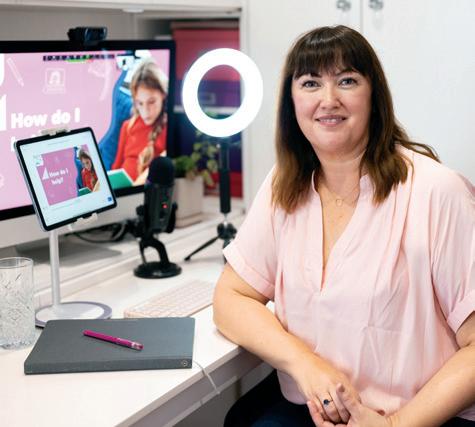
speech and language needs, and social-emotional development.
Flexible formats mean schools across Australia can access professional learning in the way that suits them best - from whole-staff sessions to ondemand digital learning.
Confident teachers create confident learners - se ing every child up for success.
Visit: learninglinks.org.au.
programs or courses meet the above conditions to ensure lasting and effective changes to teaching and learning in schools and classrooms. It’s important to plan for ongoing support from either school leaders, expert teachers or external providers.
Finally, context is paramount for choosing effective PLD provision. Educators should ask themselves what their leaners needs are, and how their PLD aligns with the strategic goals of their setting, like school and state priorities. They should also consider their own needs—what areas do the feel they need upskilling in? What are their future career ambitions? How can they best fit PLD into their schedule? Will
the PLD be enjoyable, so the learning is more memorable?
Needs may apply to individual educators or across whole departments, schools, or curriculum areas, so a collaborative approach to choosing PLD may boost its effectiveness. Educators and leaders should draw on their colleagues as resources, as a collaborative approach can identify gaps and weaknesses in individual perspectives and practices. Observation and feedback between colleagues can be an efficient and effective way to understand one’s PLD needs, as well as an opportunity to observe areas of good practice.
And while ongoing PLD is a regulatory requirement, and important to keep educators at the top of their teaching game, it’s also important to have some fun. Planning PLD should include consideration of what an educator needs, as well as what they will enjoy. Successful PLD plans will help educators to feel supported, valued, and keep the joy that attracted them to the profession alive.



Our professional development equips teachers with practical strategies to support all students to learn, develop and thrive.







50+ years supporting schools Practical, evidence-based approach
Real strategies you can use tomorrow
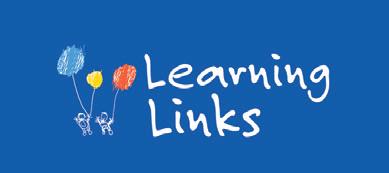

Learning Links Professional Development
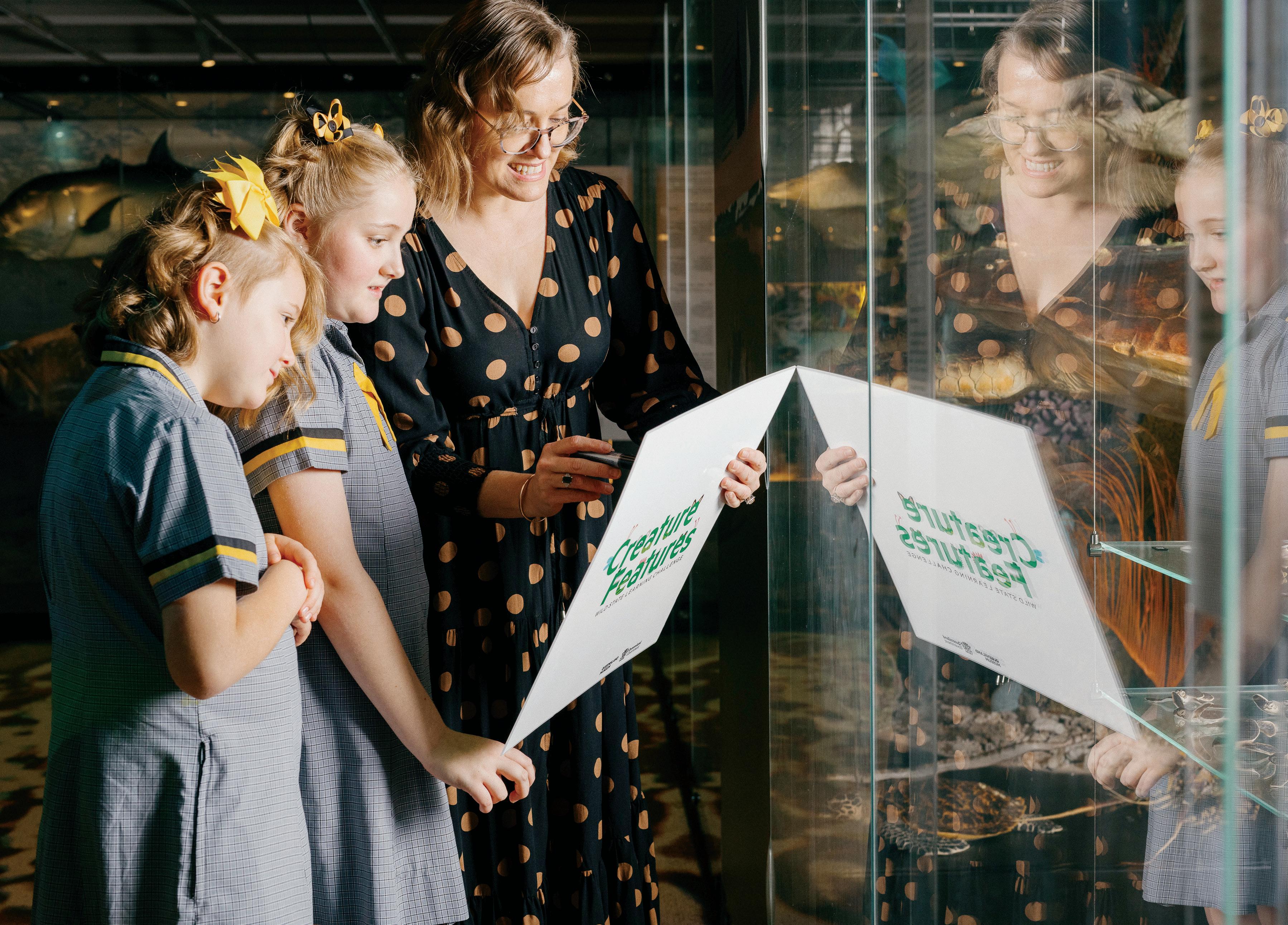

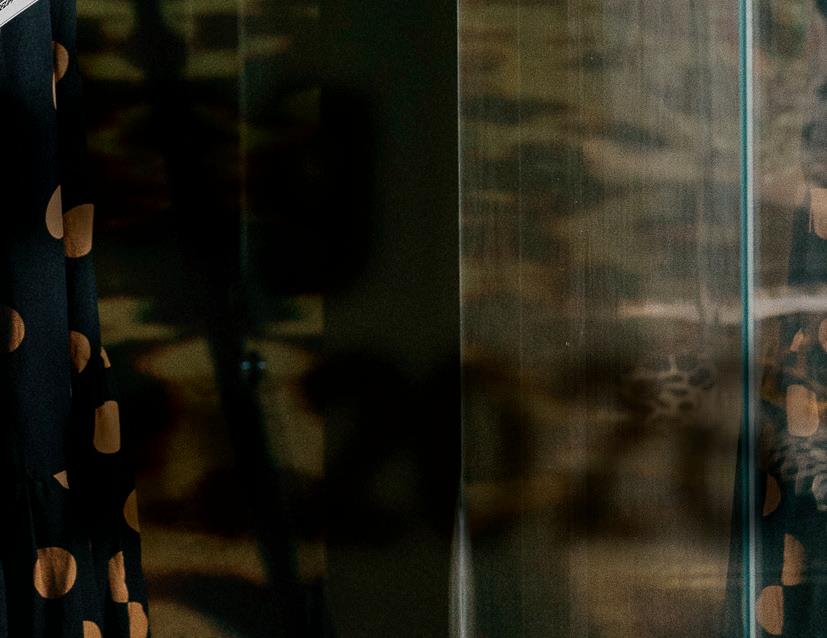
By Gemma Easton , Editor
Students form some of their best school memories through education outside the classroom.
Studies have consistently shown the benefi ts of external learning on student achievement and overall wellbeing. Outside the classroom, students can observe native wildlife, explore diff erent cultures,
and visit iconic buildings and landmarks. These encounters provide opportunities to interact with things that are not available within the school grounds, providing new and exciting experiences.
Excursions and field trips have also been found to promote greater social ties for students. Small group work is often necessary during school excursions, providing an opportunity for students to socialise with peers they

may not ordinarily interact with in the classroom.
Whether it’s a trip to your local art gallery, an excursion to a zoo or wildlife park, a visit from an adventure or challenge provider, or a multi-day camp, external learning is a powerful tool for strengthening and reinforcing classroom learning.
With fake news and misinformation pervasive
problems, and in an era where online sources dominate museums provide a point of truth. Objects held in a museum’s collection can be confidently viewed and understood by students to be the real thing.
This means incorporating museum visits into your teaching can help students appreciate the value and importance of seeking out real-world sources, particularly primary sources, and not simply relying on the internet.
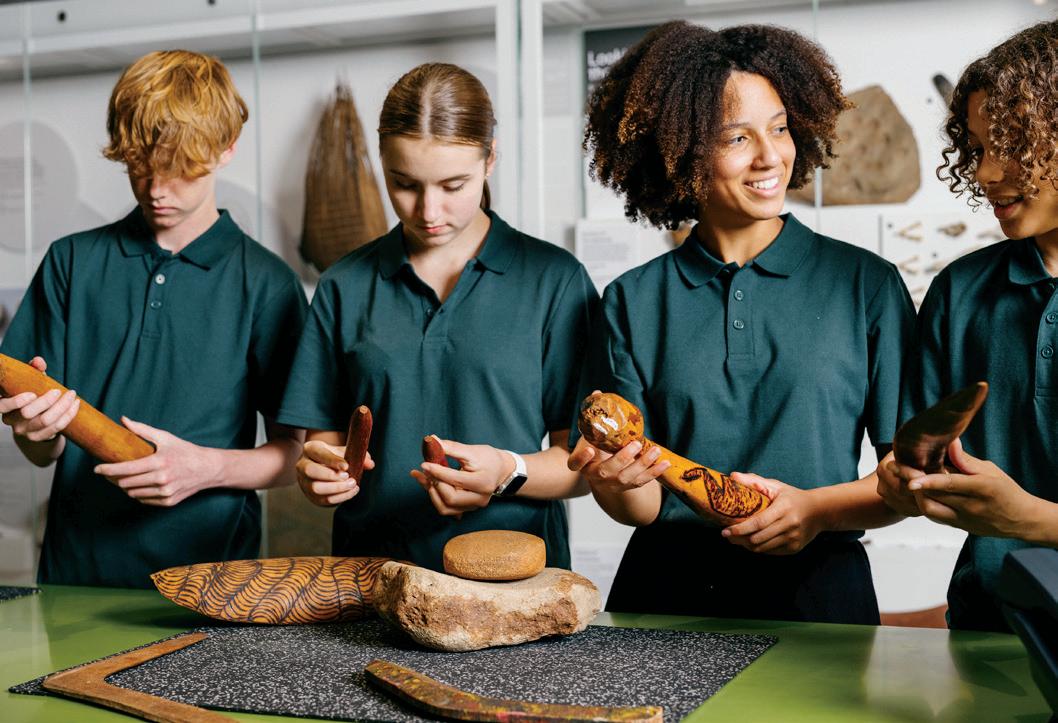
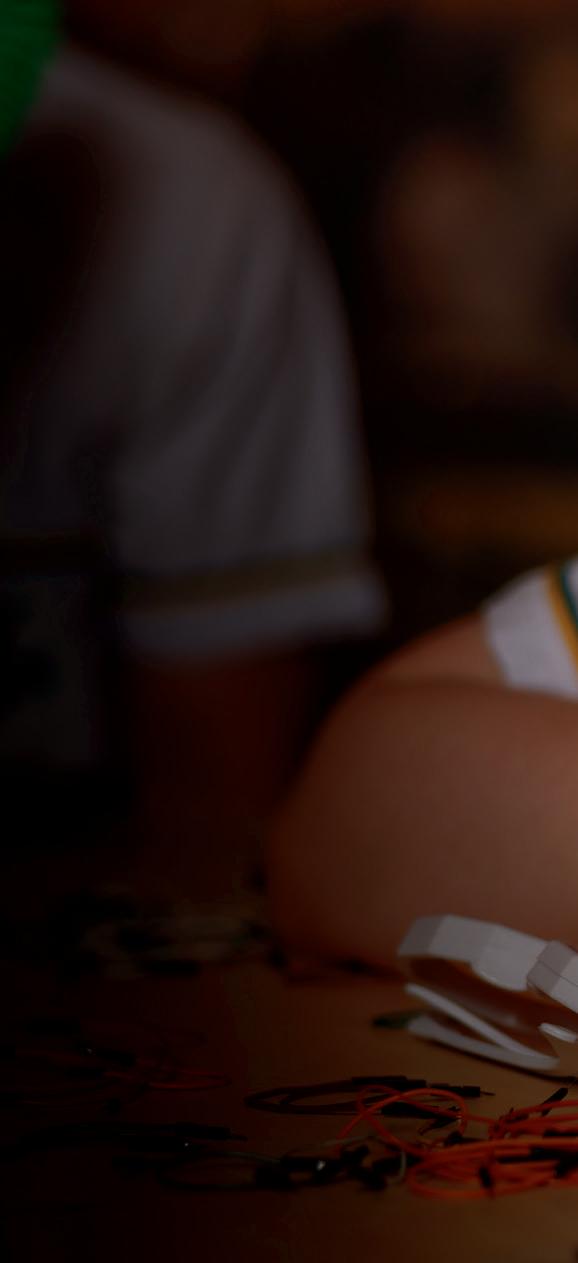













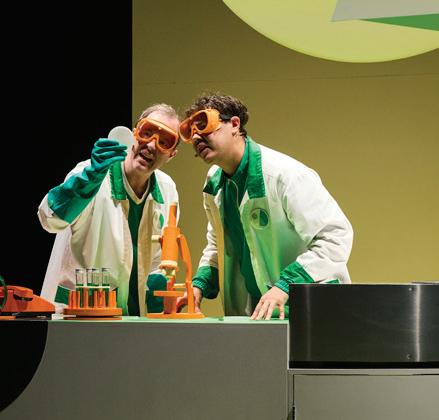



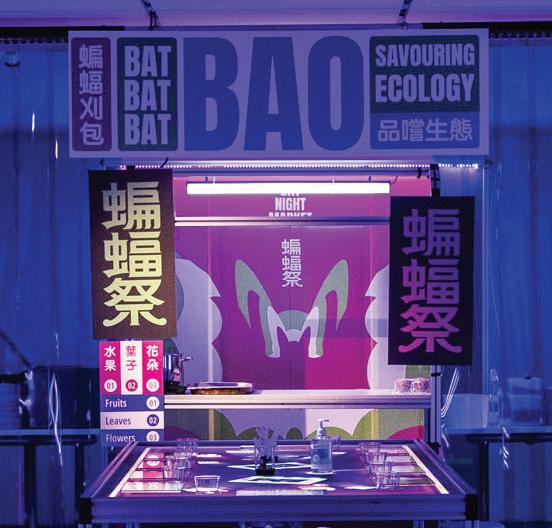















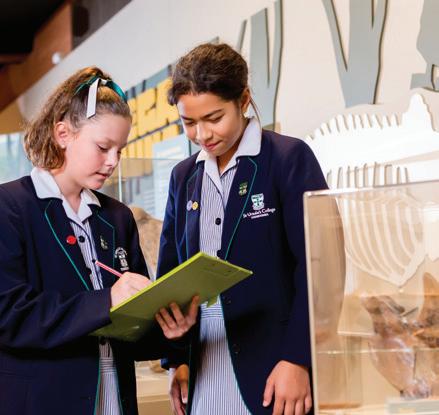

Similarly, educators at museums can be trusted as sources of accurate, reliable information.
Many museum educators devote their professional life to studying a certain topic, becoming experts in their field. Their knowledge will often be deeper than a teacher’s, meaning they can enrich student learning in a way a classroom teacher cannot.
More than this, the dedication of museum staff can help students witness and understand the
value of lifelong learning. In turn, this may spark their own lifelong learning journey.
Located at the Cultural Centre, South Bank, Queensland Museum Kurilpa off ers engaging, curriculum-aligned programs designed to spark curiosity and deepen learning.
Through hands-on experiences in SparkLab, encounters with real specimens and guidance from experts, Queensland Museum Kurilpa brings STEM,
StayKCC is the ideal destination for school groups looking to learn, connect and grow outside the classroom.
Set in the heart of the World Heritage-listed Blue Mountains, StayKCC o ers a safe and inspiring environment where students can explore nature, build friendships and develop new skills.
With a variety of comfortable, group-style accommodation options and beautiful natural surroundings, every school camp becomes an adventure. Days are filled with





engaging activities and opportunities for teamwork, while evenings around the campfire encourage reflection and meaningful conversations.
StayKCC’s dedicated team ensures every group feels supported and secure, allowing teachers and students to focus on learning and having fun. Whether you are planning a school camp, outdoor education program or end-of-year celebration, StayKCC provides the perfect backdrop where your students can thrive, make lasting connections and create memorable experiences that will be cherished long a er departing.





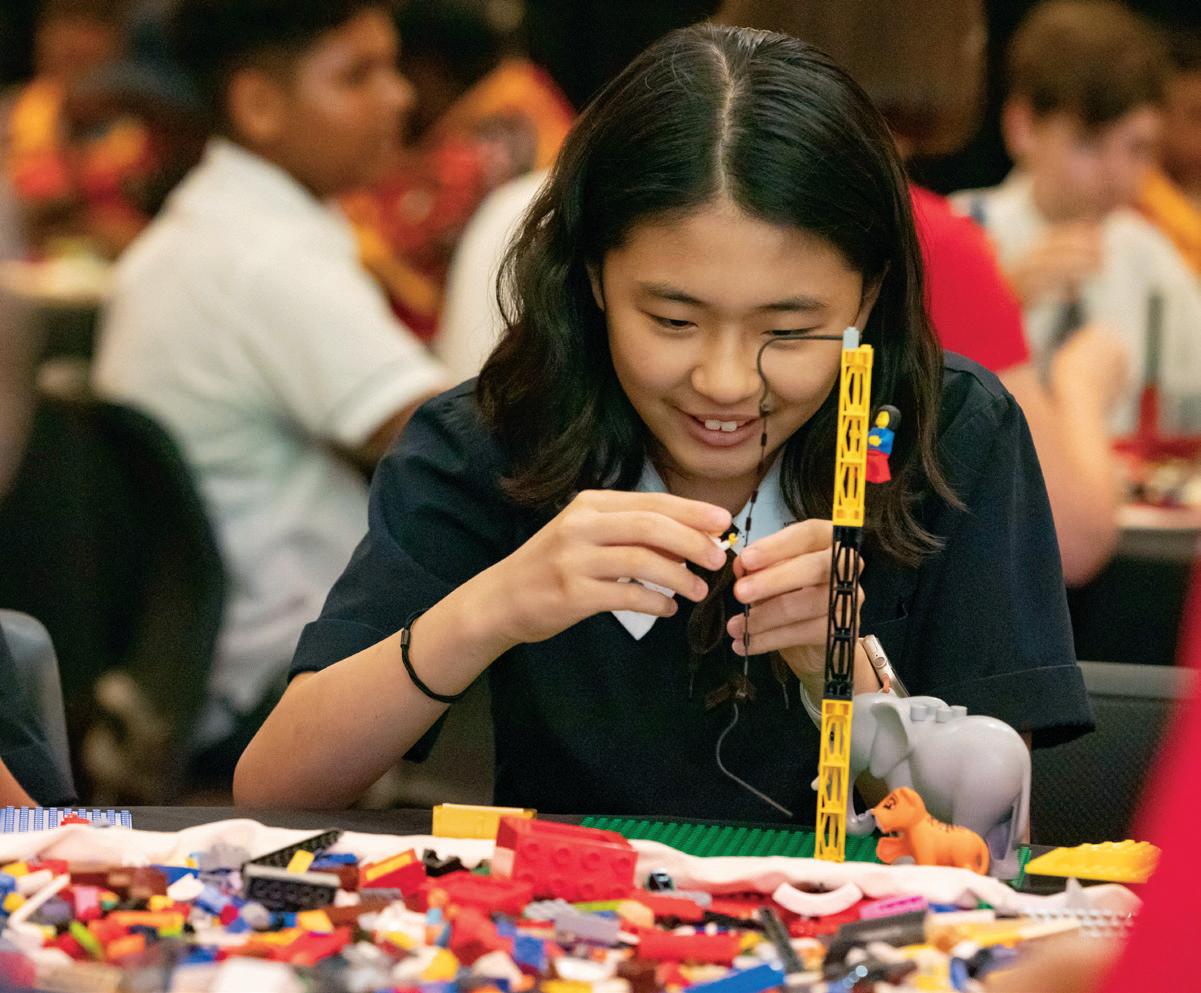
history and culture to life for students of all ages.
In 2026, schools can access exclusive, school-only sessions of Croc! Lost Giants to Living Legends – a brand-new exhibition exploring one of the world’s most powerful and enduring animals, the crocodile. Self-led and guided programs are available for Prep to Year 12, supported by teacher guides and activity sheets.
Also launching in 2026, Meet the Expert: Digital Incursions connects classrooms across Queensland with museum experts and collections, through interactive presentations and Q&As. Delivered on selected days in Terms 1 to 4, the program is suitable for primary and secondary schools located throughout all of Queensland.
The museum’s popular Museum Meet Up series will also return for Terms 2 to 4 2026, off ering students in Year 5 and above unique opportunities to meet professionals and explore real-world examples of Science and HASS.
The 2026 World Science Festival Brisbane (WSFB) school program returns from March 25 to 27, 2026. This year WSFB has aligned with the Australian Curriculum Version 9 and expanded the program to off er educators and students an unparalleled opportunity to connect with leading science experts and new approaches to learning.
Since 2016, WSFB has welcomed more than 30,000 students and educators to explore the wonders of STEM—from launching rockets and building bridges to uncovering microscopic worlds. In 2026, festival highlights will return, including Australia’s favourite science communicator Dr Karl, alongside handson activities and resources designed to spark imagination, ignite curiosity and connect your students with the fascinating science shaping our future.
Whether you’re looking to energise your lessons or immerse your students in the wonders of STEM, WSFB empowers them to thrive in our ever-changing world.


School camps bring together the benefi ts of many EOTC activities—providing handson learning opportunities, helping to build teamwork and communication skills, and giving students access to education experts beyond their classroom teachers.
Camps can be tailored to suit your school group, with age appropriate activities, and suitable accommodation
Nestled in the northeast of Victoria, Alexandra Adventure Resort provides adventure activities and camp experiences, making it a popular destination for schools.
Located less than two hours from Melbourne, the accredited camp boasts large facilities with more than 200 beds in fi ve lodges, with central heating and cooling in all rooms.
Programs include a combination of instructor led activities and teacher led activities. Outdoor programs are tailored to each school and more onsite activities can be organised to enhance your stay.
With over 16 onsite activities on off er, the instructor led activities are guided and supported by the team, taking students through activities ranging from fl ying fox, rock climbing, high ropes, leap of faith, giant swing, crate stacking and canoeing. Activities are suitable from Years 3 to 12, challenging students and building personal development while participating in a safe, fun outdoor environment.




Offering an unmatched and diverse range of facilities: with a focus on comfort, community, and natural beauty





Providing a wonderful learning environment and unforgettable experience for school groups and camps. Located in the World Heritage-listed Blue Mountains. Flexible accommodation options. Indoor & outdoor programs that are designed to inspire and engage. Variety of event spaces and onsite catering.





Choose from a variety of teacher led activities such as archery, gaga ball, low ropes initiatives, raft building, orienteering, disc golf and beach volleyball.
At the resort, spacious campgrounds include a swimming pool, grassed oval and campfire area overlooking the lake. The recreation area includes a large undercover space with tables and seating as well as table tennis, foosball and a tennis/basketball court for some down time.
Set within the breathtaking World Heritage-listed Blue Mountains, StayKCC offers
an immersive outdoor classroom experience where students are surrounded by native bushland and endless opportunities for discovery.
StayKCC offers a dynamic mix of activities and experiences— both onsite and in collaboration with partners across the Blue Mountains— that cater to every level of adventure. From energising team challenges and bush survival skills to uncovering local history and marvelling at the night sky, each program is thoughtfully designed to engage students physically, mentally and


socially. These experiences not only support education and recreational curriculum outcomes but also foster resilience, teamwork and a deeper connection to nature, while creating lasting memories.
Comfort and nourishment are also top priorities with a selection of accommodation options tailored to suit groups of all sizes and delicious catering, ensuring students and staff sleep soundly and are well-fed with nutritious meals that fuel active days and support wellbeing.
Whether you are planning a
multi-day camp or a focused outdoor education program, StayKCC provides the perfect balance of adventure, learning and comfort. StayKCC offers a place where students grow, connect and thrive in the great outdoors.
Bring Victoria’s golden heritage to life with an excursion to Bendigo, once the richest gold-producing city in the world. This remarkable legacy lives on, and students can experience it first-hand through Bendigo Heritage’s immersive and educational excursions.
Bendigo Heritage coordinates

school group visits to both the iconic Central Deborah Gold Mine and Bendigo Tramways.
At Central Deborah Gold Mine, students descend 61 metres underground, stepping into the shoes of past miners to see how 929kg of gold was extracted. Above ground, they’ll explore the original buildings and machinery essential to the mine’s operation, including the Blacksmith’s Shop, First Aid Quarters, Carbide Lamp Room, Engine Room, and Gold Treatment Area. Afterwards, students can try their hand at panning for real gold.
At Bendigo Tramways, students board a Vintage Talking Tram to uncover Bendigo’s fascinating history and discover the city’s key landmarks and monuments.
Together, these experiences provide rich cultural and historical context that connects directly to classroom learning.
Bring history to life with immersive, curriculumaligned programs designed to captivate and educate. With custom itineraries, Bendigo Heritage offers a safe, engaging, and unforgettable learning adventure for school groups.


Incursions bring the fun and learning benefi ts of external learning to your school.
Often, programs can be tailored to suit diff erent group sizes and learning goals.
For educators, incursions relieve the pressure of planning, sett ing up, and delivering lessons. Incursions facilitators will most often bring their own equipment, and set up and pack down activities.
Incursions can be lower cost than an off site excursion, and
often require less paperwork and administration to organise.
A wide range of activities can be brought to your school, including adventure activities, interactive literacy and numeracy lessons, STEM workshops, outdoor adventure activities, and theatre performances.
Seeing a live show—for example a play, musical, orchestra performance or choir—can have strong learning outcomes for students. Many students will not have enjoyed these cultural experiences previously, and a school excursion to see

a live performance presents an important learning opportunity.
Students studying drama may benefi t from seeing a live play, while music students can learn through orchestra performances and musicals.
Toonworld’s vision is to encourage, empower, educate, and entertain kids through interactive workshops that are both fun and creative. These incursion workshops, hosted at your school, aim to improve communication and literacy while fostering creativity and imagination.
The stop-motion animation sessions are a fantastic and engaging way to boost comprehension, creativity, and teamwork—particularly when linked to units or books students are currently studying. Integrating stop motion in book units is a fun and innovative approach to help students better understand the stories they read. By bringing scenes or characters to life through animation, students can demonstrate their understanding while practising storytelling and collaboration.
This hands-on activity promotes deeper thinking, enhances technology skills, and makes learning more enjoyable. Whether retelling a chapter, creating an alternative ending, or animating a favourite scene, stop motion workshops facilitated by Toonworld Education help bring reading to life in the classroom.
Bring the thrill of live performance directly into your school with Musica Viva Australia In Schools, an all-inclusive touring program off ering 14 culturally and musically diverse shows featuring Australia’s finest performers, available nationally in 2026.
Each booking includes at least 12-weeks of curriculumaligned lesson activities, as well as comprehensive teaching resources designed to enrich classroom music and cross-curricular engagement. Teachers also benefi t from online professional development webinars, where musical specialists guide you through learning activities and tools, and introduce you to your touring ensemble.
With financial assistance available for small, low-ICSEA, or remote schools via the Equal Music program, MVAIS ensures that access to quality music education is equitable and inspiring for all students.
Whether it’s telling stories, creating songs, learning new languages or making new friends, Musica Viva Australia In Schools 2026 has something for all schools.


By Kelly Bell , Educator, Mentor, Founder The Learning Network
When we talk about the essential pillars of primary education, literacy and numeracy are usually the first to come to mind. Yet, there is another foundation of lifelong learning and wellbeing that deserves equal recognition: physical education.
Primary PE is not just about sport. At its heart, it equips children with the physical literacy, confidence and social-emotional skills that set the stage for a healthier, more engaged future. “Only 26% of children aged 5-12 meet the recommended 60 minutes of daily physical activity” (AIHW, 2022).
That statistic alone underscores the urgency of quality PE in schools.
Research shows that children who participate in regular, quality physical
education experience better concentration, improved academic outcomes and stronger social wellbeing. Movement isn’t a distraction from learning: it is fuel for the brain. Some of the most valuable lessons occur not through a screen but through shared games, active challenges and moments of perseverance on the playground.
The benefi ts extend well beyond sport. According to Beyond Blue (2023), “One in seven children aged 4-17 experience mental health issues, with physical activity being a proven way to reduce stress and anxiety.” At a time when children’s mental health is under increasing strain, PE becomes a protective factor, not an optional extra.
High-quality PE is about creating engaging experiences where every child feels capable of success. It ensures that students who may not see themselves as “sporty” still discover the joy of movement and the confidence to stay active. For some children, school is the only place they will encounter structured physical activity, making it a matter of equity as well as health.
The benefi ts are wide-ranging. Physically, active children develop stronger bodies, coordination and motor skills. Emotionally, they gain resilience by trying, failing and trying again. Socially, they learn cooperation, empathy and how to encourage others.
These are not “extras” they are life skills, woven into the fabric of education.
At a time when children’s activity levels are declining, the role of schools is more important than ever. The 2024 Australian Early Development Census revealed a troubling rise in developmental vulnerability among children entering school, particularly in emotional regulation and social skills. This highlights how critical PE is in strengthening both body and mind.
Prioritising PE is not about producing elite athletes. It is about giving all Australian children the tools and confidence to embrace an active lifestyle, improving health outcomes and building habits that last into adulthood. When schools place PE at the centre of the curriculum, they do more than improve fi tness. They foster stronger, healthier, more connected communities.
Primary PE matters because every child deserves the chance to move, learn and thrive.


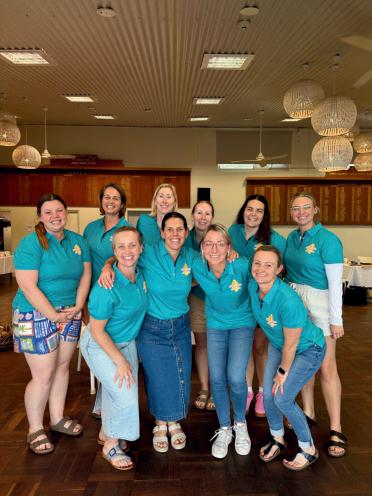




By Naomii Seah, Industry Reporter
In a medical emergency, qualified first aid officers and access to essential equipment could prove lifechanging.
Australian schools are required to have first aid equipment easily to hand, and appropriately trained first aid officers. Schools are bound by the Federal Work Health and Safety Act 2011, and corresponding state work health and safety acts, which stipulate first aid duties.
Schools must provide access to at least one first aid kit, first aid facilities, and trained first aid people, at all times. This includes during off-campus
activities like travelling for sports or performances. When working with external providers, schools should coordinate with other parties to ensure health and safety obligations are met.
A first aid risk assessment must also be performed so a school can determine its specific requirements. This includes consideration of the hazards, size, location and roll of the school.
When planning first aid resources, schools must consider the known needs of those with health concerns or disabilities, and additional people besides staff and students such as contractors and family members.
Regular reviews should be undertaken of the first aid
risk assessment to ensure first aid procedures remain fit-for-purpose. Changes in enrolments and staff, as well as property maintenance or construction should all be accounted for. Larger schools could also be required to have a first aid room. Special education settings may be subject to different first aid requirements.
Schools should have at least one centrally located and easily accessible first aid kit. However, it is likely that most schools will need more than one kit, including a portable kit, and additional kits for additional buildings.
Kits must include basic equipment like wound dressings, splints and
bandages. The exact contents will depend on a school’s risk assessment, and mobile first aid kits should have their contents evaluated against the proposed activities.
Kits must be regularly checked and maintained to ensure items are replaced after use, that they are in working order, and any medications have not expired.
Schools might also consider having an AED stocked as part of their first aid equipment. It is considered best practice to have one available, as around 3000 of the 30,000 people who experience a cardiac event each year in Australia are young people. Ninety percent of those who experience a cardiac event without access to an AED will not survive.
Darryl Stewart, General Manager
Commercial Operations at St John Queensland said a well-stocked first aid kit should include essentials like gloves, bandages and gauze; when travelling, schools should adapt their kits.
“At excursions or camps, add snake bite bandages, burn treatments, and additional supplies; for sports activities, include instant ice packs, strapping tape, and extra bandages; for remote travel, carry larger quantities and specialised items given possible delays in medical care.”
Tony Parfitt , Training Services Manager from The Royal Life Saving Society NSW, said a school’s first aid kit should always be practical, portable, and prepared.
“Essentials like bandages, dressings, gloves, and an epinephrine auto-injector may save a life on campus, while excursion kits should expand to include items like instant ice packs, burn dressings, and insect repellent.”
Mary Dawes, Managing Director of First Aid for You added that every school should have spare asthma puff ers, adrenaline autoinjectors, and the essential items for using a defibrillator correctly, including a razor, towel and scissors.
First aid training requirements may diff er slightly by state, but federal law requires that first aiders hold a nationally recognised Statement(s) of Att ainment from a Registered Training Organisation. A standard Provide First Aid certificate is valid for three years, however the Provide CPR component within it, or as a standalone certificate, only remains valid for 12 months.
Schools should consider their first aid risk assessment when deciding what level of training is appropriate or necessary for their context. Some courses or refreshers can be delivered online to suit teachers with busy schedules. Other providers can off er package courses which ensure total compliance with state standards, and some may even be able to tailor content to suit various needs.

Ms Dawes said: “When choosing the correct course or even provider, schools need to make sure the practical skills are made relevant to the school community. The theory of first aid is always going to be generic, but practical sessions need to engage the staff and students.
“Teachers should be practising on both adult and child equipment, students can also undertake this, and scenarios should relate to the real
issues schools face, when a medical emergency occurs.”
Mr Parfi tt noted that first aid training isn’t just about compliance, “it’s about saving lives when seconds matter.
“The most relevant course for staff is one that reflects the realities of the school environment: CPR, asthma and anaphylaxis response, managing playground injuries, and knowing when to call for extra help.”

Mr Stewart added that choosing the right first aid course begins with understanding the needs of the school community.
“Teachers and staff benefi t from comprehensive workplace first aid courses that prepare them to respond to the most common medical situations on campus. Schools with a strong focus on sport, outdoor education, or excursions may also require training in specialist areas.”
Some schools might wish to provide students with first aid training. Older students benefi t from increased employability; younger students may be more empowered and confident by learning skills to help their family and community in emergency situations. Some providers deliver training aimed at younger children with age-appropriate content such as recognising an emergency when it happens and how to call for help.
“Age-appropriate programs focus on building confidence and practical skills in managing injuries or sudden illness,” explained Mr Stewart.
“These skills empower young people to act decisively and calmly when faced with emergencies such as asthma att acks, allergic reactions, or playground accidents.



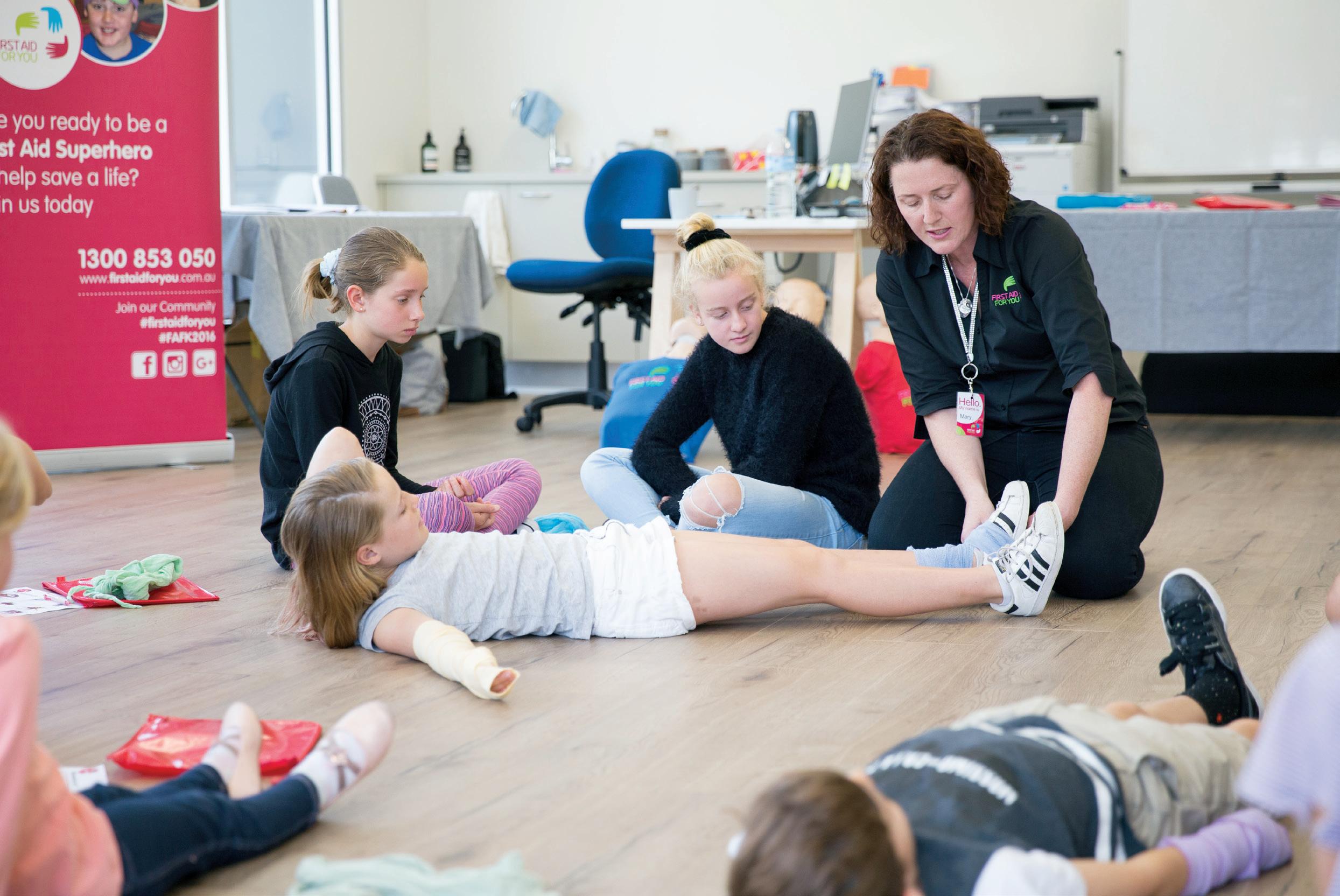
Are your kids ready to be superheroes?
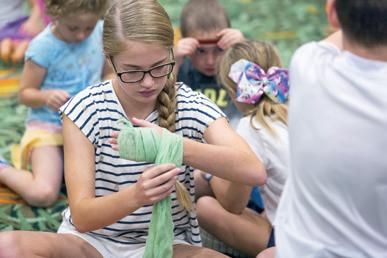



“First aid knowledge nurtures confidence, resilience, and a sense of responsibility for others, qualities that support both individual growth and safer school communities. Importantly, these are lifelong skills that students carry into their homes, workplaces, and the wider community.”
Mr Parfi tt added: “For students, first aid is a life skill. When young people know what to do in an emergency, they become confident, capable, and calm under pressure. Even simple training—placing someone in the recovery position or calling triple zero—can make all the diff erence.
“By empowering both staff and students, schools build a culture of safety where everyone is ready to step forward, not step back, in an emergency.”
Finally, Ms Dawes added that teaching students first aid is about creating a community.
“Students are ready and willing to generally assist, and as adults we may need to rely on the younger generation

to help us in the future! The basics of first aid, or even just the understanding of when ‘help’ is needed, can be taught to our youngest students.
“Children definitely have fun when these sessions are taught in class and genuinely like to help others, plus they are really engaged and don’t find first aid to be a repetitive topic. Everyone in the community, younger and older, should understand how important it is to get help when someone is in need.”
By Naomii Seah, Industry Reporter
Schools have a duty to minimise risks to students and staff in carparks.
If schools provide a carpark for staff or students, they have a duty under workplace health and safety standards to ensure carparks are as safe as possible to enter and exit, and don’t pose undue risks. Each state in Australia has their own safety standards, so schools should check with their local government to ensure facilities are compliant. There are also national standards to meet.
At schools, pedestrians and vehicles are all moving around one another. Some may also be bringing non-motorised transport such as bikes. This means it is important for schools to identify possible hazards, streamline traffic flow, proactively manage surfaces, provide clear signage, ensure accessibility, separate traffic streams and set-up appropriate monitoring systems.
Possible hazards in any carpark include entry and exit points. These areas of the carpark interface with busy public roads, and act as bottlenecks during busy times. One way to minimise risk of a jam is to separate the entry and exits for staff, the public, and where applicable, students. These should be clearly marked to ensure their efficacy.

Chris Paton, Business Development Manager from Area Safe Products, said access control is about making sure the right people are in the right spaces. “For schools, this often means ensuring staff have secure parking while keeping through-traffic to a minimum. Boom gates, automated entry points, or even fold-down parking protectors can prevent parents or visitors from taking staff bays.”
Streamlining traffic flow is also a vital tool for improving carpark safety. “Managing the flow of vehicles improves safety for students. For instance, setting up one-way systems or designated drop-off zones reduces congestion and limits the number of vehicles circulating near pedestrian areas.”

It’s vital to reinforce these measures with clear signage and road markings, so everyone using the carpark understands where to go, including contractor and delivery services. Schools should also mark clear areas for pedestrians and cyclists.
“The safest car parks are the ones where pedestrians and cyclists have their own clearly marked paths that keep them away from moving traffic. Raised walkways or fenced-off areas work well, but even simple strategies can make a big difference. At one co-educational school, pedestrian pathways were clearly defined with handrails, helping to separate foot traffic and bikes from vehicle areas.
“Line marking and signage play a big part in reinforcing these safe routes. Bold zebra crossings, arrows, and painted walkways reduce confusion for drivers and students alike. Signs such as ‘Children Crossing’ or ‘5km/h Shared Zone’ act as constant reminders to slow down and watch out. These cues are especially important during busy pick-up and drop-off times, when car parks are at their most chaotic.
“The end result is less stress for staff and a calmer, safer environment for students.”
Schools can also utilise physical measures like speed bumps.
“Physical traffic-calming measures are a simple but effective way to keep things under control,” said Mr Paton.
“Speed humps are one of the most reliable tools schools can use; they force drivers to slow down and pay attention, which is vital in areas where students may dart across without warning.
“Bollards and barriers provide an additional layer of protection. A combination of speed humps and steel bollards can be introduced to slow vehicles and keep them physically separated from walkways. These solutions reduce the chance of near misses and remind drivers that they’re in a shared space where student safety comes first.”
With the right carpark safety measures, schools might be surprised just how smoothly the start and end of the day can be.

By Gemma Easton, Editor
It’s no secret that for many students, outside play is the best part of the school day.
Playgrounds help children develop their fine and gross motor skills, encourage physical activity, and help keep young bodies strong. Running, jumping, climbing, pushing and pulling, students enjoy a range of development benefits. Time in the fresh air and sunlight also promotes physical and mental health and wellbeing.
Playgrounds are also important sites of social connection and emotional development. The unstructured nature of outdoor play can help children to interact with children outside of their usual social circle, and beyond those they may work with in the classroom, helping to build communication skills and confidence. Imaginary play enjoyed in the playground helps children imagine or try out different roles and activities of life. This can help them to think about things from different perspectives and adjust their own world views.
When planning a new or upgraded play space, make sure students can engage in a range of different play, including

physical, imaginative, and creative play. Importantly, your playground should be safe and inclusive for students of all ages and abilities. After all, great memories and lifelong friends can be made on the playground.
The design of your playground will be influenced by the age and ability of your students, the number of children enrolled at your school, and factors related to

the playground site, for example is it flat and even, or will levels need to be incorporated? How will water run through the site and where will it drain to? Are there natural elements like trees that will need to be worked into the design?
The broader area around your playground should also be worked into plans. To ensure accessibility for all users, wide, even paths and ramps are a good choice. Water fountains and bubblers, rubbish bins, and covered
seating areas will make your playground more user friendly.
Equipment should be age appropriate but push children— inclusive playgrounds meet children where they are, and also offer challenges for students to work towards.
For longevity, look for equipment that children will not easily outgrow or become bored with. Including options for ground play and activities at waist height can improve inclusivity.


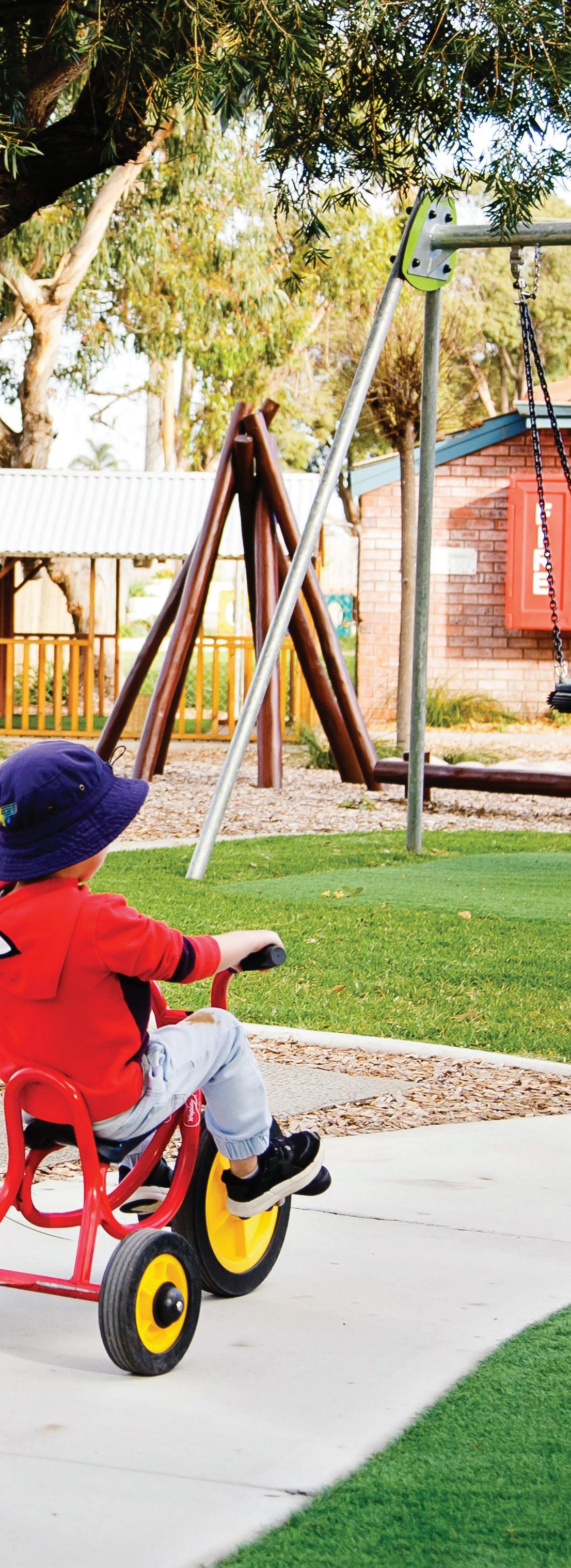


Active Discovery take a holistic approach to playspace design for schools. We focus on the needs of the children, working in collaboration with all stakeholders, to deliver playspaces that ignite imaginations, challenge gross motor development, foster communication, engage problem solving skills and allow children to harness the joy and power of play.










a child’s

Jolene Humphrey from Active Discovery said: “One of the most effective approaches to catering for different ages is an awareness of the important developmental milestones children progress through. Primary-aged children thrive on climbing towers, rope challenges, slides and imaginative play. They also love the experiences that sand factories and water play provide.
“Quiet zones strategically designed under decks in the shade create an atmosphere that allows children to decompress and manage their emotions in the context of calm, quiet play.”
Small slides, low climbing frames and monkey bars are good options for younger children,
while larger climbing structures and fitness equipment might be well-suited to older students. Including games like tic tac toe or sliding puzzles can encourage students to play together. Similarly, equipment like double slides which allow two children to slide together helps turn a solo activity into a shared experience.
Ms Humphrey said fostering inclusion through universal playground design goes beyond accessibility; it is about ensuring every child can participate meaningfully. “Universal design principles such as swings with harnesses and back support, pod swings to support users with low muscle dexterity, and carousels that are wheelchair
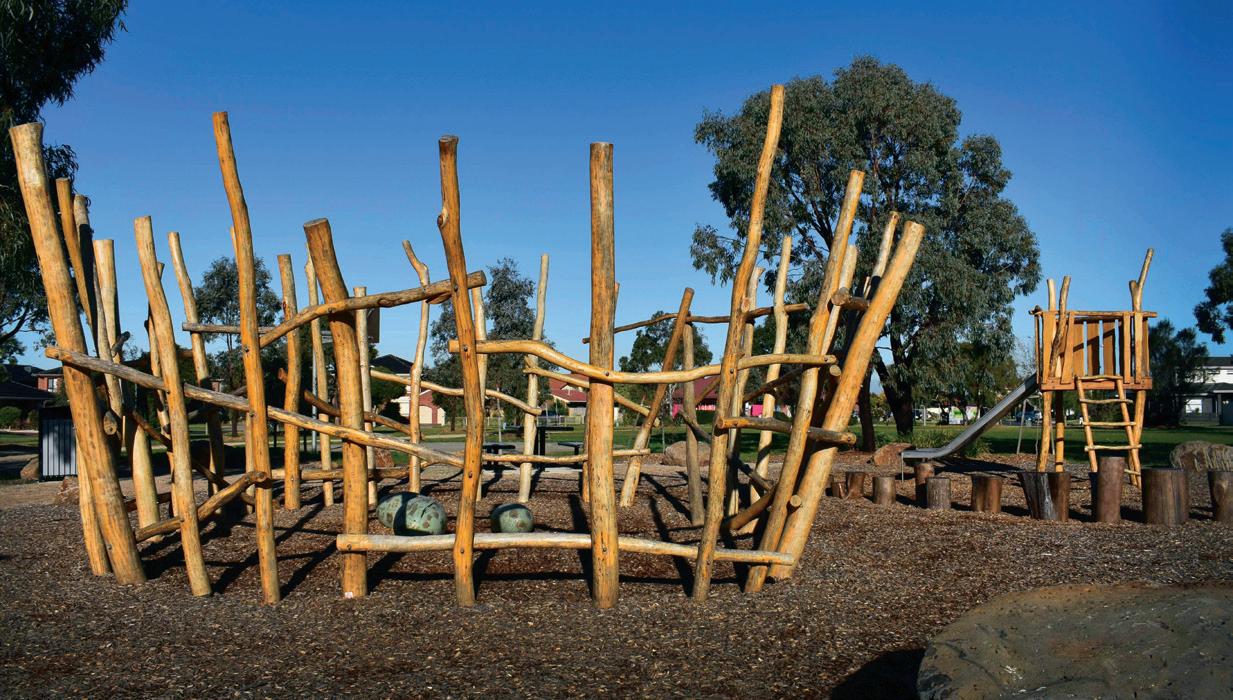
Rather than including a few pieces of ‘special’ equipment, segregated and separate to the main play space, accessible equipment should be incorporated proudly into the playground, and all students encouraged to try it out. Some equipment is designed to be used independently, while other items are designed for the user to be assisted at first, with the goal of independent use long-term.
Sensory items like different textures or elements that make music are also useful to include.
“Research shows that sensory play builds nerve connections in the brain’s pathways, which lead to the child’s ability to complete more complex learning tasks. Sensory play facilitates exploration and naturally encourages children to use scientific processes while they create, investigate and explore,” Ms Humphrey said.
friendly whilst allowing space for able bodied children to ride as well, are common features of inclusive designs.”
Children on the autism spectrum and those with some physical disabilities can benefit from training their sense of balance. Using equipment like carousels and twisters can enhance their ability to play and live more independently.
Swings can also help children with balance, and a range of adaptive swing seats are available in different lying and seating options. Some are designed to be used alone, while others have space for several children to use the swing at the same time.
“Sensory play provides opportunities for children to refine their thresholds for different sensory information helping their brain to create stronger connections to process and respond to sensory information. Language development, cognitive growth, fine and gross motor skills, problem solving skills and social interaction are also strengthened through sensory play.”
Recent years have seen a trend toward nature play to help students connect with the world around them. As the name suggests, nature play involves incorporating natural elements into play.
Consider areas in your playground that might be suitable to add swings and ropes into trees, rock gardens and balance logs, sandpits, mud kitchens, and other features which take advantage of the natural landscape.







Including planting pockets of luscious greenery, colourful flowers and native plants can add visual appeal and some natural touches to your play space.
Andrew Smith from Timber Creations said modern school playgrounds are shifting toward nature-based, environmentally conscious designs. “Children thrive in natural spaces that spark their imagination and help them connect with the world around them. Natural play spaces offer inclusive, open-ended fun, without the environmental toll of some synthetic materials.”
While it may seem simple to incorporate natural elements into your play space, thoughtful design and placement are essential. “Effective nature play relies on smart layout, good flow, and compliance with strict Australian playground standards,” Mr Smith said.
“Timber-based playgrounds are not only better for the planet, but they also teach children valuable lessons about sustainability. Natural timber absorbs CO₂ during its life, stores it during use, and nourishes ecosystems at the end of its life, all without creating landfill. These structures can often be placed directly on existing ground, reducing excavation and minimising carbon impact.
“With Australia’s generally good weather and the wide variety of adaptable nature play options available, our schools are well positioned to create spaces that are fun, safe, fully inclusive and future-friendly.”
Safety is always a top priority for schools and should be front of mind when building or upgrading a playground. Even with proper supervision and appropriate safety measures, children may still fall from equipment or trip over. This means a good quality safety surface that will cushion falls is an essential foundation for your playground. Some surfaces are available in different colours, and can incorporate games and activities, or important school or cultural symbols.
Dr Ian George from Surfacing Contractors Australia said selecting the right playground surface is crucial for student safety and long-term durability.

“Choosing the right playground surface isn’t just about aesthetics, it’s about ensuring the safety and wellbeing of every student. Different materials offer varied benefits based on age group, equipment height, location, and budget.
“Rubber softfall (wet pour rubber) provides excellent impact absorption, accessibility, and design flexibility, ideal for all ages and high equipment areas. Synthetic grass with an attenuation underlay offers a natural look with cushioning, suitable for general play zones. Bark is affordable and blends well with natural surroundings but needs turning over and frequent

topping up. Sand is low cost but less suitable for accessible play or tall structures and again needs maintaining so it doesn’t compact and become hard.
“In Australia, playgrounds must comply with AS 4685:2021 and AS/NZS 4422:2016, covering equipment and surfacing standards. Schools should use certified installers, conduct risk assessments, and choose surfaces tested for free height of fall.”
To keep playgrounds accessible to all students, including those with mobility issues, opt for a disability accessible surface with clear, safe, entry and exit points around equipment. And while the
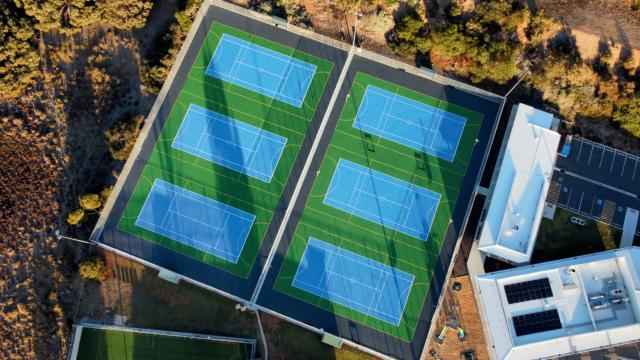



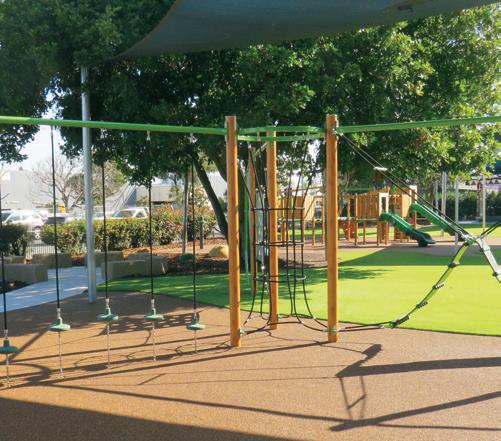
playground is generally the kids’ domain, staff will also benefit from an inclusive playground design. Supervision of play spaces by teachers who live with disability, or have a temporary condition, like a broken leg, becomes much easier when spaces can be accessed and shared by all.
Dr George stressed that maintenance is key to ongoing safety. “Regular inspections should check for wear, compacted loose fill, or damage. Loose materials like mulch or sand need periodic topping up. Rubber and synthetic surfaces benefit from cleaning and timely repairs. Annual inspections by certified professionals ensure continued compliance.
“Consideration should also be given to using high quality EPDM wear layers and UV stable polyurethanes, in relation to making the surface last and look good long term, in conjunction with active maintenance.”
The learning that happens on the playground might be just as important as the learning that occurs in the classroom.
Social and emotional development, physical milestones and critical and analytical problem-solving skills are key benefits of using playgrounds.
Perhaps the most important aspect of playgrounds, though, is the fun and joy they bring to children.
When children are happy, they will feel ready to engage with their schoolwork and participate in class. Releasing some excess energy in the fresh air and sunshine in an exciting play space can improve focus and help students concentrate.
Every student, regardless of their age, ability or preferences should feel welcome on the playground.
Make sure your playground is a safe, welcoming and inclusive space that helps all students build memories and share connections.





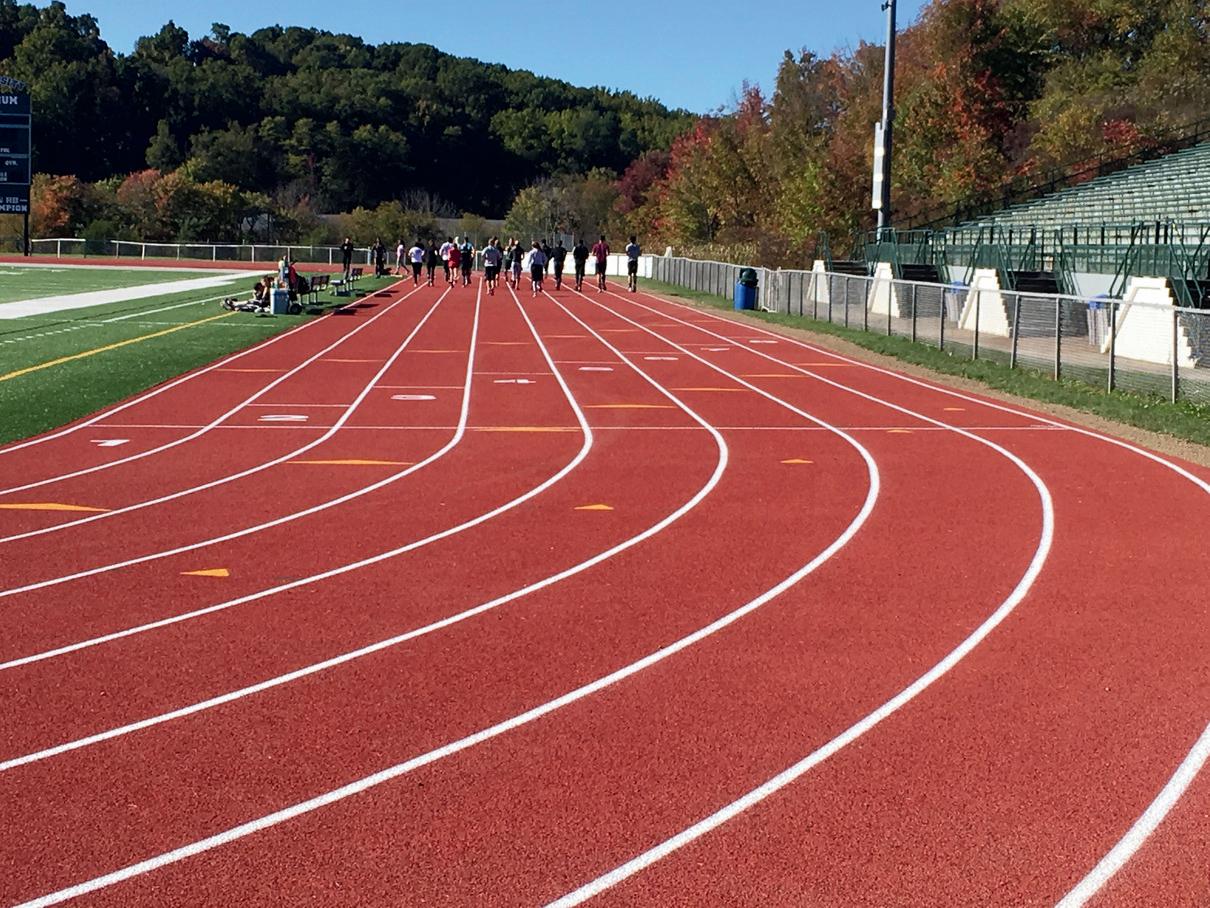



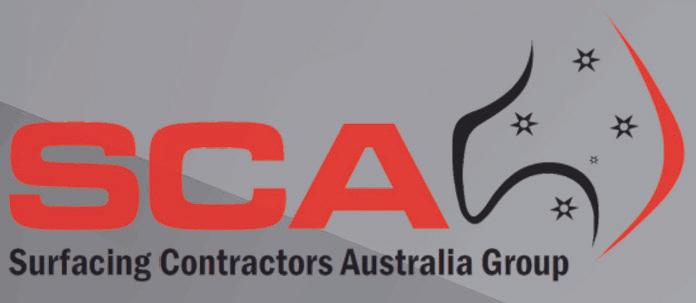



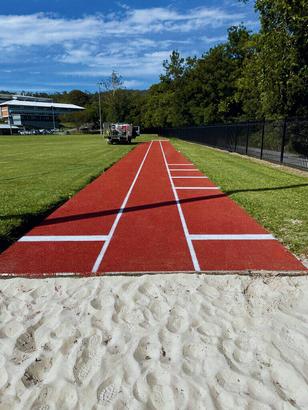






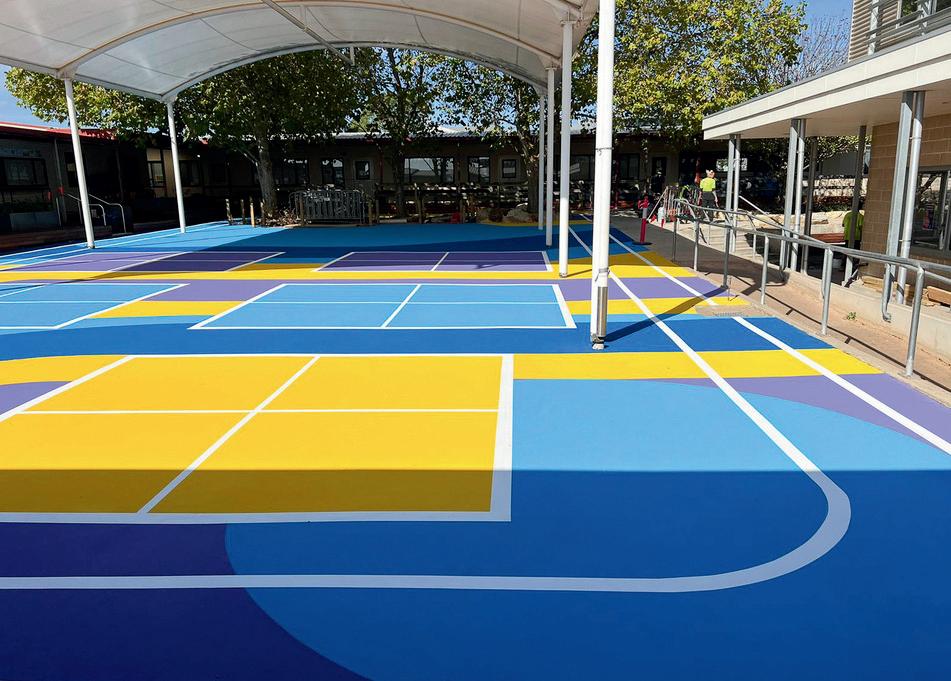







By Gemma Easton, Editor
Warm weather and sunny days make going outside a very tempting prospect. But if your school doesn’t offer ample shady places for learning, playing, and relaxing, you might have to stay inside this summer.
Shade structures, including covered learning areas, shade sails, umbrellas, and shelters can all be installed around your school. Protecting areas from sun, wind and rain, shade structures can improve the functionality of outdoor spaces, making them usable year-round and in all weather conditions.
Shady spaces are also an inviting space for outdoor lessons, helping students and teachers to enjoy some fresh air and sunshine while they learn. And pockets of shade are important for students during break times, allowing them to relax between classes without getting sunburnt. With the summer holidays not far away, now might be the perfect time to plan a shade structure project for your school.
As with all projects, careful planning will ensure your shade structure is fit for purpose and lasts a long time.
Initial planning will involve a site analysis. Consider the orientation of the shade structure, and height and depth of the space to ensure UV radiation is blocked without making the space too
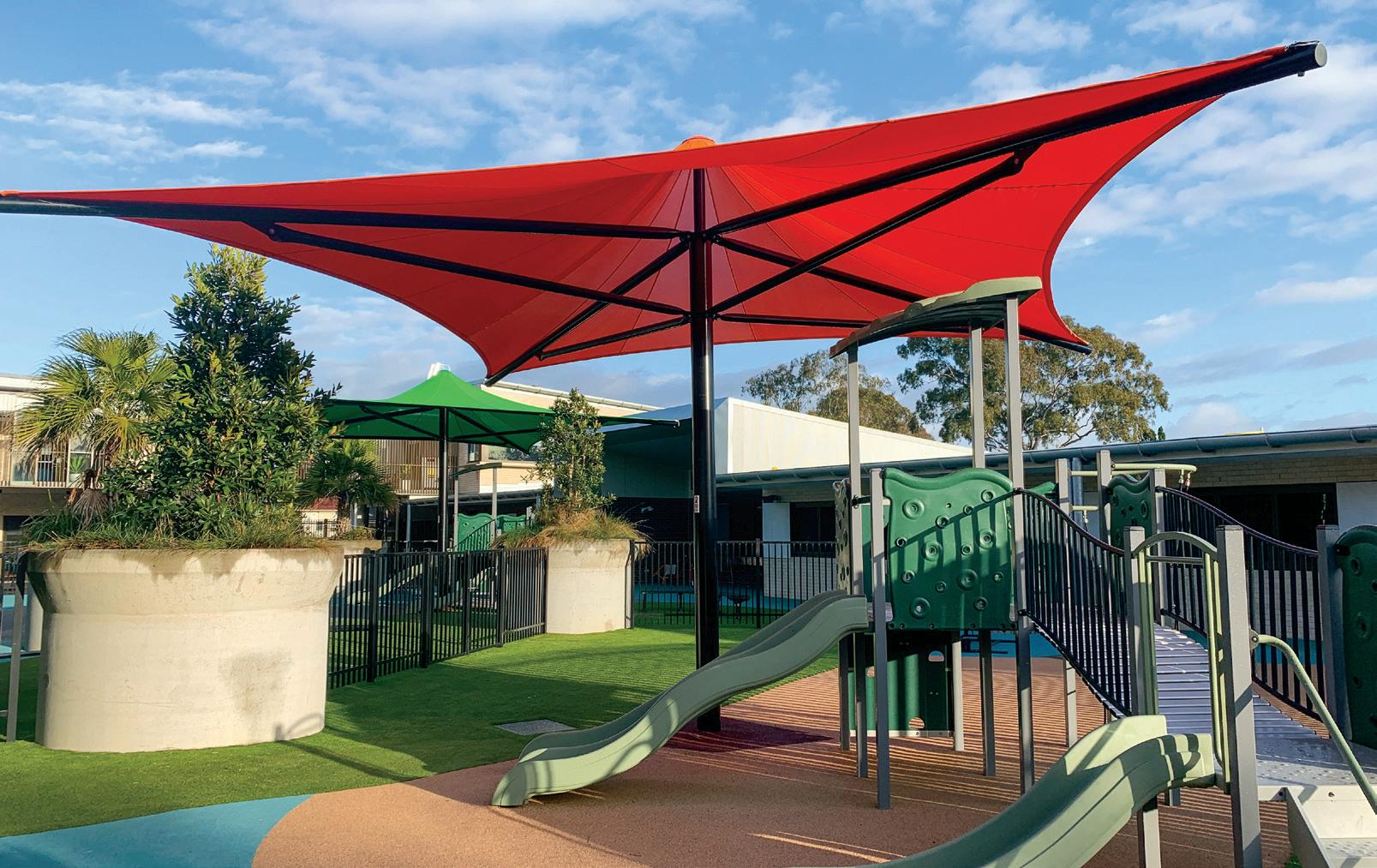
cold. Also consider if falling leaves or branches from nearby trees might fall on the structure, and make sure any anchor points will not become a trip hazard.
Alastair Morris from MakMax said that careful planning is essential for schools considering a shade project. “While the installation itself is often scheduled during school holidays or pupil-free days to minimise disruption, the groundwork starts well in advance. Each project involves detailed engineering, compliance with building codes and Australian Standards, development approvals, and the fabrication of custom components before work begins on site.”

For optimal results, plan your shade solutions with the help of a reputable manufacturer who can offer advice on position and orientation of your structure and most suitable materials for your project, and can ensure your shade solution meets regulatory standards and requirements.
Shane Scully from Scully Outdoor Design Australia, said when selecting materials for shade structures, schools should consider durability, UV protection rating, and whether waterproofing is needed. “It’s important to factor in local weather conditions such as wind and rain, as well as maintenance requirements. Materials should be safe, long-lasting, and
suitable for the school’s specific environment and usage.”
In your planning, include measures to minimise impacts on your school community during the project.
Staff and students should be kept well away from the area, and contractors should have clear access for bringing materials on and off site. If work is expected to be noisy or dusty, consider whether some classrooms close to the work site need to be left empty during installation.
Measures should also be in place to allow contractors to access your school grounds after hours if necessary, in line with safety and security considerations.

Size, shape, material and colour are just some of the ways schools can customise shade solutions. A variety of products are available including shelters, canopies, umbrellas and shade sails.
Mr Morris said the best shade solution for your school will depend on how the area is used.
“For smaller zones, such as playgrounds, tuckshops, or outdoor seating areas, a simple option like an architectural umbrella can provide reliable shade and shelter, while also adding a splash of colour and design.
“For areas that need to accommodate larger groups, engineered shade structures such as fabric-roof COLAs (Covered Outdoor Learning Areas) are increasingly popular. These curved-roof designs can be tailored to fit rectangular or square spaces, creating all-weather outdoor classrooms, covered walkways, or assembly areas.
“When it comes to sports facilities, fabric canopies are ideal because of their ability to span large areas without the need for internal columns,” Mr Morris said. “Sports court roofs can be designed to cover one, two, or even three basketball-sized courts, giving students protection from sun and rain while still maintaining natural ventilation and light.”
Mr Scully agreed that different shade suits different spaces.
“There are definitely instances where shelters are more appropriate than shade sails or other lightweight structures. Shelters with solid roofs are ideal in areas that experience frequent rain, strong winds, or where yearround protection is needed. They offer better coverage, durability, and can support additional features like lighting or seating.
“Shelters are especially suitable for outdoor learning spaces, lunch areas, or sports courts where consistent weather protection is essential. Unlike shade sails, which primarily block sun, shelters can provide full overhead coverage and withstand harsher conditions, making them a more practical long-term solution in certain environments.”
Mr Scully said shade solutions can be tailored to suit individual schools and locations.
“Customised sizes, shapes, and colours allow schools to match their branding, fit unique spaces, and meet specific functional needs. Tailored designs also help maximise shade coverage while complementing existing architecture and playground layouts.”
Myriad options are available for you to transform your shaded area into an outdoor classroom, entertainment hub, or sports precinct.
Shade structures can be fitted with IP Paging and PA systems, digital signage and lighting. With these added features, school assemblies and presentations, community events, incursions and much more can be hosted in these spaces.
Court markings for tennis, basketball, volleyball and a host of other sports can be added to covered areas. With the addition of hoops or nets, your space can become a multi-sport facility.
To keep it simple, add handball courts or hopscotch grids to encourage students to get active.
In after school pick-up areas, bench seating could be added to shelters to give students a place to wait safely and comfortably. Similarly, fixed or portable tables and chairs can be added under


shade umbrellas or sails for staff and student use. In some cases, water tanks could be installed to catch water run-off from shade structures. Outdoor blinds can extend the use of verandas and canopies, providing added weather protection. Blinds are available in clear PVC or mesh fabric; clear PVC offers greater weather protection while mesh fabric reduces heat and glare.
Of course, there are some instances where installing a permanent shade solution just won’t work. For school sports days and carnivals, open days, and other outdoor events, portable shade options are available. These include marquees, gazebos and umbrellas.
Customised gazebos in house colours can help foster house spirit and friendly rivalry between opposing teams; schoolbranded gazebos can be used at community events to increase awareness of your school. Branded gazebos can also lend an air of professionalism to school events.
To get the most out of your potable shade, before investing, think
about what it will be used for. Does it need to be suitable for concrete, gravel or grassed surfaces, and are the appropriate anchoring tools included? How many people will need to fit under it, and how many people will likely be on hand to set it up? Also make sure you have a suitable location to store portable shade structures while not in use.
UV exposure, indoor lunchtimes during poor weather, and reduced outdoor activity—these are some of the consequences of not providing enough shade at your school. The downsides far outweigh the benefits of investing in quality, purposebuilt shade structures.
Mr Morris said: “One of the most common pitfalls is treating shade as a short-term fix. While a low-cost shade sail might seem appealing, schools are often disappointed when it weathers quickly or doesn’t provide the level of protection students need. Choosing a fully engineered structure from the outset ensures safety, longevity, and better value over the life of the structure.”


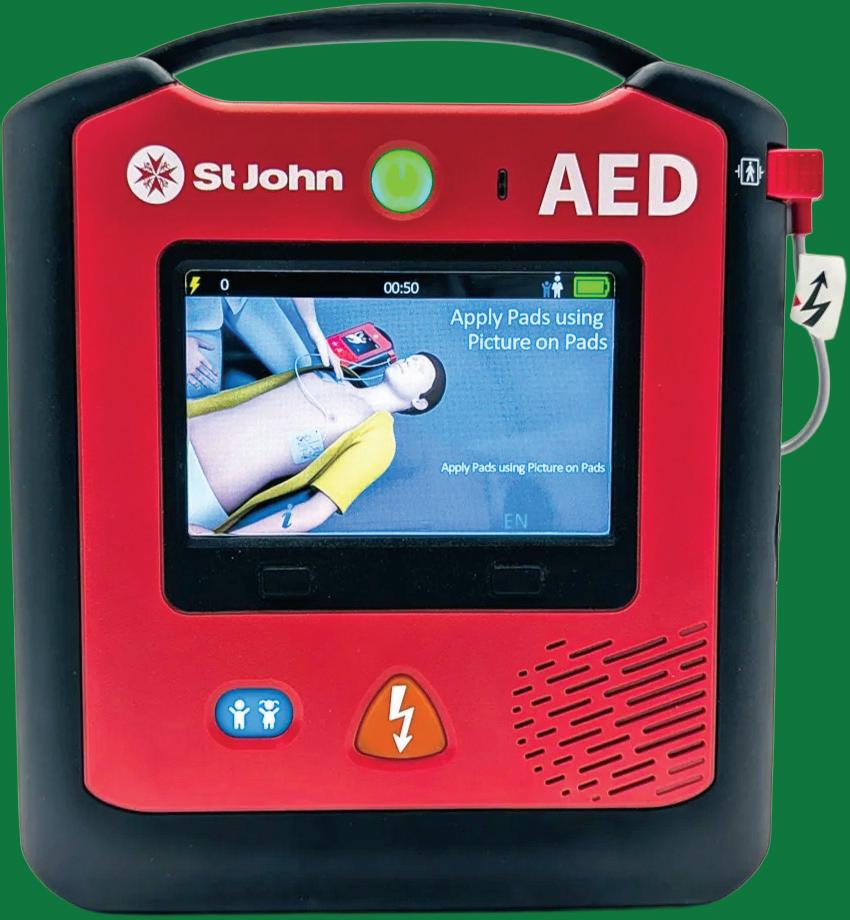
$1995
When every second counts, the St John X3 Defibrillator delivers fast, reliable response you can trust. Combining premium technology with simplicity, it guides users through every step with clear video and voice instructions. The X3 automatically analyses heart rhythm, records ECG data, and runs daily selfchecks to ensure it’s always ready. With child mode at the press of a button, rugged IP55 protection, and intelligent safety features, the X3 is built for any environment. Compact, smart, and dependable, the X3 brings lifesaving confidence to every workplace, community space, and public setting.
C St John Queensland P 1300 785 646 W stjohnqld.com.au



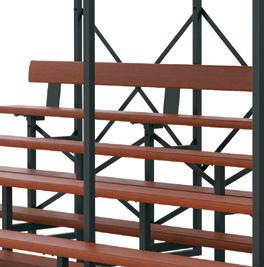
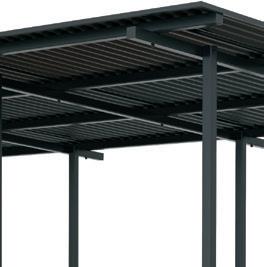


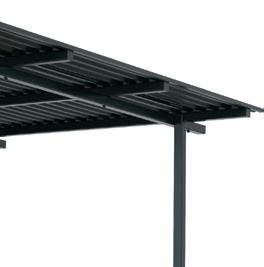


Create welcoming and low-maintenance outdoor spaces with Astra’s new Timber-Look Aluminium Slats, designed to capture the warmth of timber with the strength and durability schools need. Ideal for high-use environments, this finish is available across our most popular products, including covered settings, picnic settings, bins, Grandstands and more. Enjoy the look of natural wood without the upkeep – no sanding, staining or fading, just lasting performance year-round. Proudly Australian designed and made, Astra Street Furniture helps schools create spaces students and staff love.
C Astra Street Furniture P 1300 509 589 E sales@astrastreetfurniture.com.au W astrastreetfurniture.com.au


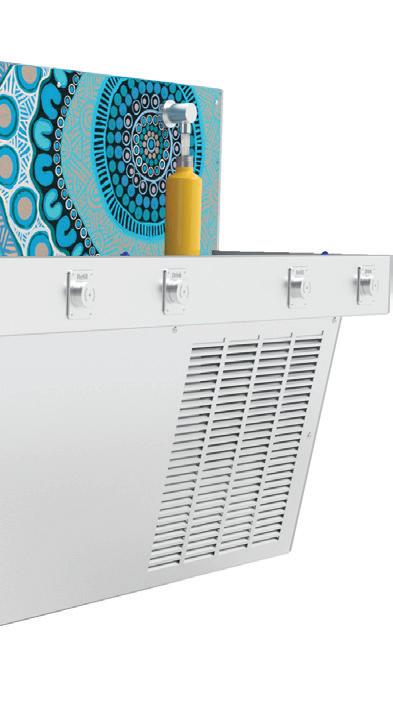
With three fountains and three taps, you’ll provide easy access to fresh and clean drinking water, with minimal waiting periods. Student tested and approved! Water bottle refill, cool art. Worried about kids being kids? Durable, robust design withstands the demands of a busy school environment. Personalise your Hydrobank with school logos, colours, or even authentic Aboriginal art.
C Civiq – The Art of Hydration P 1300 600 300 E hello@civiq.com.au W civiq.com.au/schools

Meet is a chair dedicated to community or educational use, combining comfort, robustness and great practicality. The perfect edition to your classroom.
e design@resourcefurniture.com.au p 1300 577 267 | resourcefurniture.com.au
